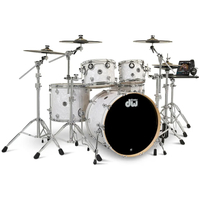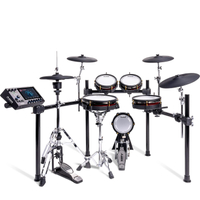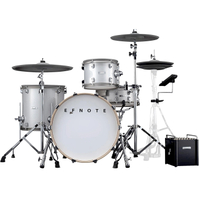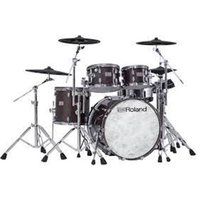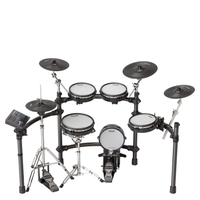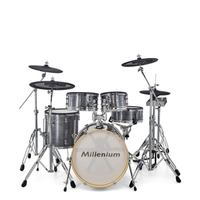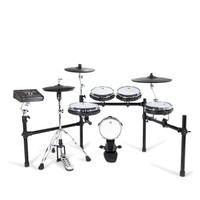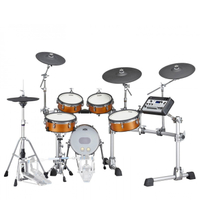Best electronic drum sets 2025: Top picks for every playing level and budget, tested by drummers
Our experts have tested over 80 kits to bring you this guide to the best electronic drum kits available today - the guide also includes full reviews, buying advice, video and audio demos
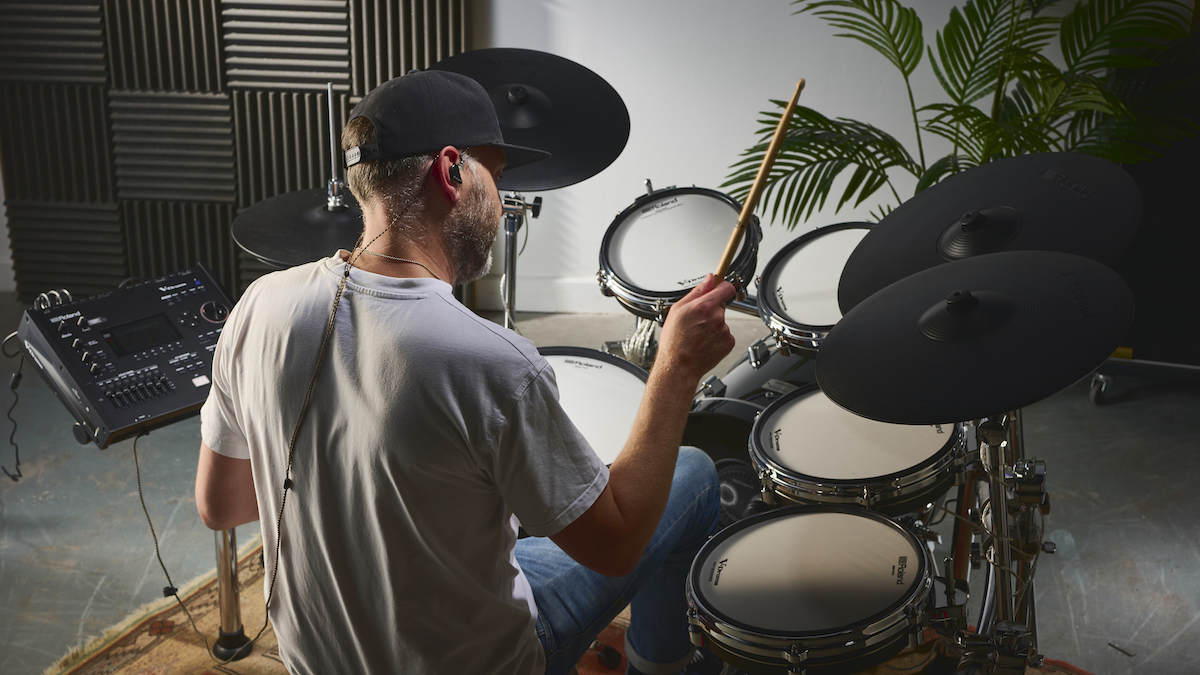
The world of electronic drums (which you’ll also hear referred to variously as 'e-kits' or 'electric drums') has never offered more choice to every level of player than it does in 2025. Wherever you are currently in your playing journey - from total beginner to professional working drummer - the best electronic drum sets have never been closer to replicating the experience of playing an acoustic set. From the quality of sounds to the feel of the pads, features and tech that were once reserved only for high-end kits have trickled down to more affordable setups, meaning you’ll be able to find a great kit for your budget.
There are multiple reasons you might want to invest in an e-kit: practicing drums at home without the noise of an acoustic kit; limited space meaning an electronic set is your only option; or you’re looking for reliability and control over your sound, both live and in the studio. The best electronic drums are capable of delivering all of the above.
With ever-growing options, from a range of brands and multiple price points, it can be tough knowing where to start the search for your first, or next, e-kit. Myself and the MusicRadar team have been testing electronic drums for more than two decades - we’ve reviewed over 80 kits for the site at last count - so we know how e-drums have evolved and what the best kits offer today.
If you’re here to learn more before you decide on the best electronic drum set for you in 2025, head to our comprehensive how to choose and FAQ sections, written by our in-house experts, explaining everything you need to know about electronic drums before you make a purchase.
There’s a link to a full review with each of our kit recommendations if you want to read even more detail and we have also captured video and audio for the majority of our top picks. We've personally unboxed and thoroughly tested every kit featured in this guide, so you know that our assessment is based on hands-on experience and backed up by years immersed in the world of e-drums.
Our top picks
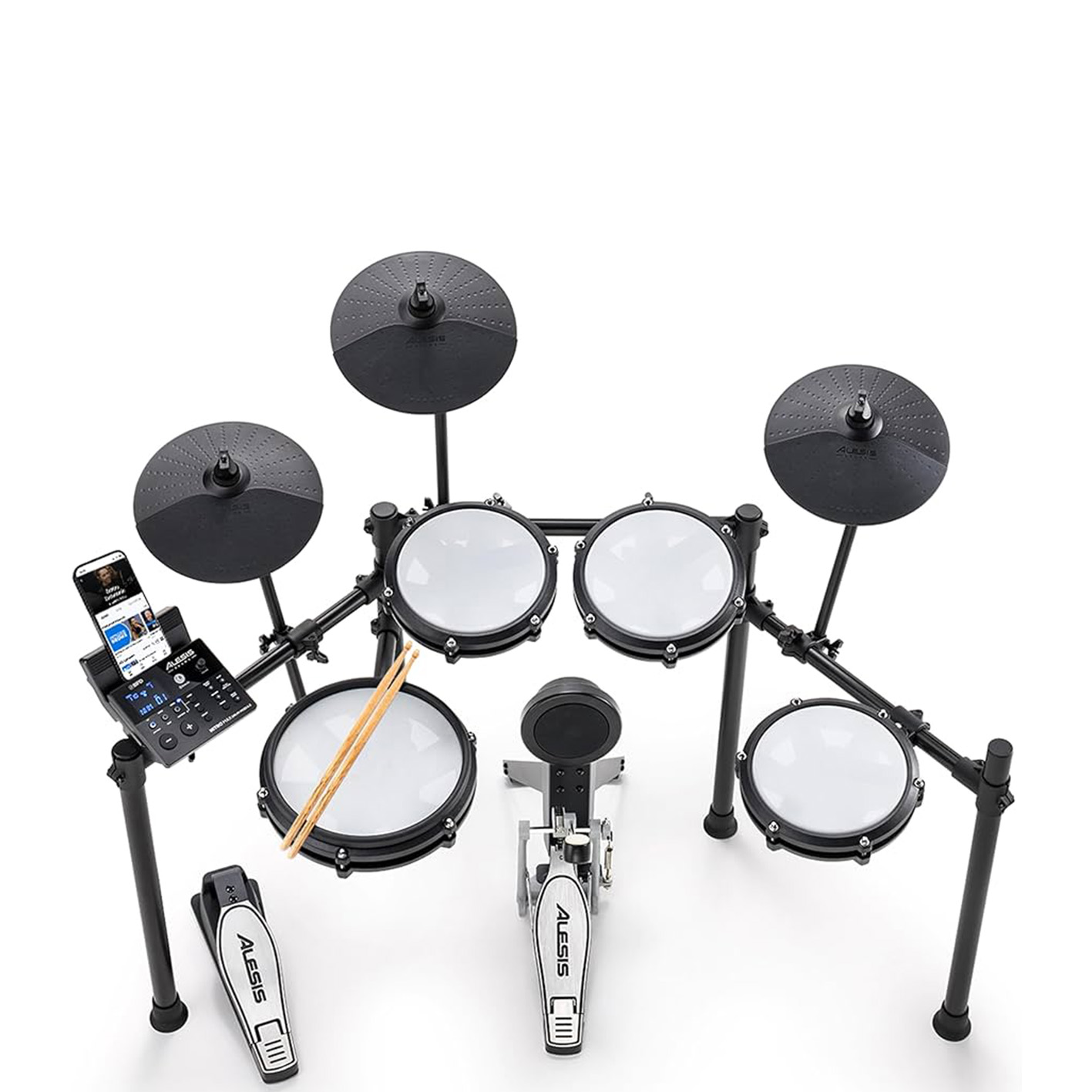
The Alesis Nitro Max supersedes and builds upon the best-selling Nitro Mesh - which was our previous pick for best beginner e-kit. While the hardware looks and feels very similar, a key Nitro Max upgrade is the module, which features sounds from the excellent BFD drum sample library. This kit was a real hit with our testing team.
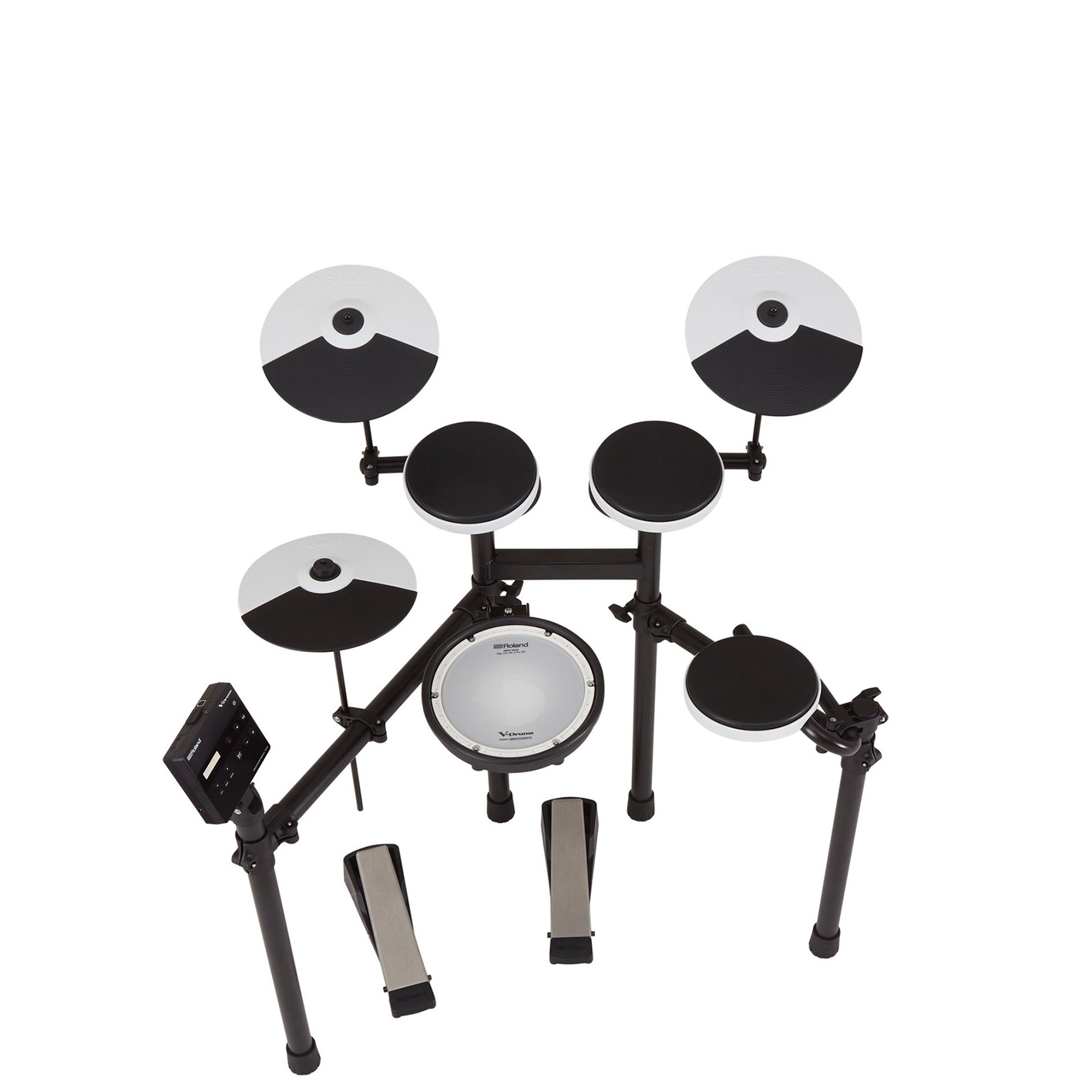
This hugely compelling offering for newcomers features a Roland dual-ply mesh snare head, pleasingly responsive bass drum and hi-hat controllers, and some of the best sounds that we’ve heard at this price point. If you're willing to spend a little more on your first kit, this is the one we would recommend.

The slick touchscreen module is the headline here, loaded with BFD3 and 45GB worth of multi-layered sounds. It’s the equivalent of hooking your e-kit up to a powerful laptop and we found it to be an absolute joy to play. We've never played an e-kit that comes closer to recreating the sound of an acoustic kit.
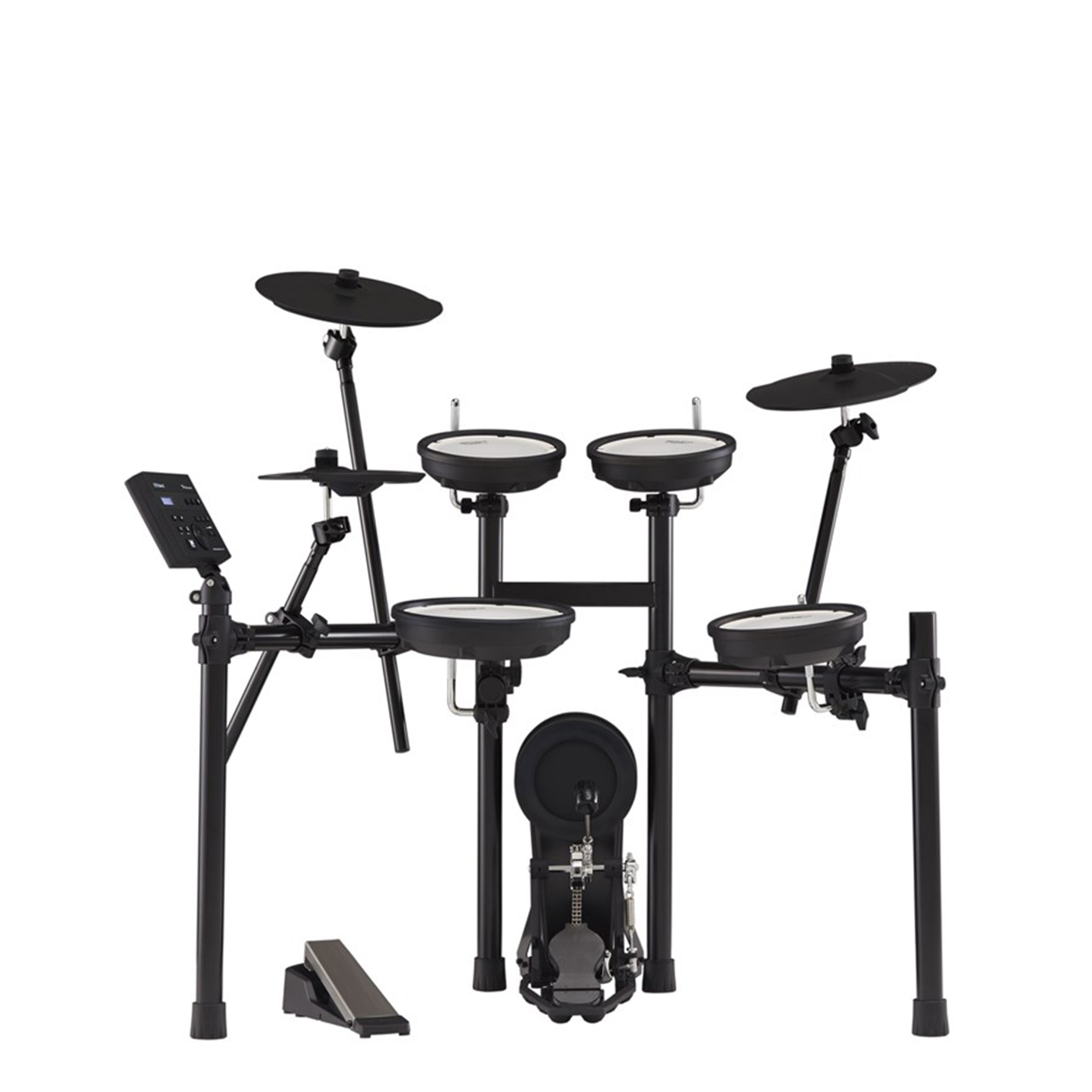
With Roland's patented, tuneable, dual-ply heads across the snare and toms, plus a standalone kick drum pad, the TD-07KV is one of the most affordable, no-compromise setups in the V-Drums family. A ideal step-up or home practice kit.

The EFnote 3X is a fantastic 10-piece kit created by ex-Roland and ATV employees. Aside from the striking looks that wouldn't look out of place on stage, standout features include a brilliant hi-hat with optical sensors and a stylish module with limited but excellent-quality sounds.
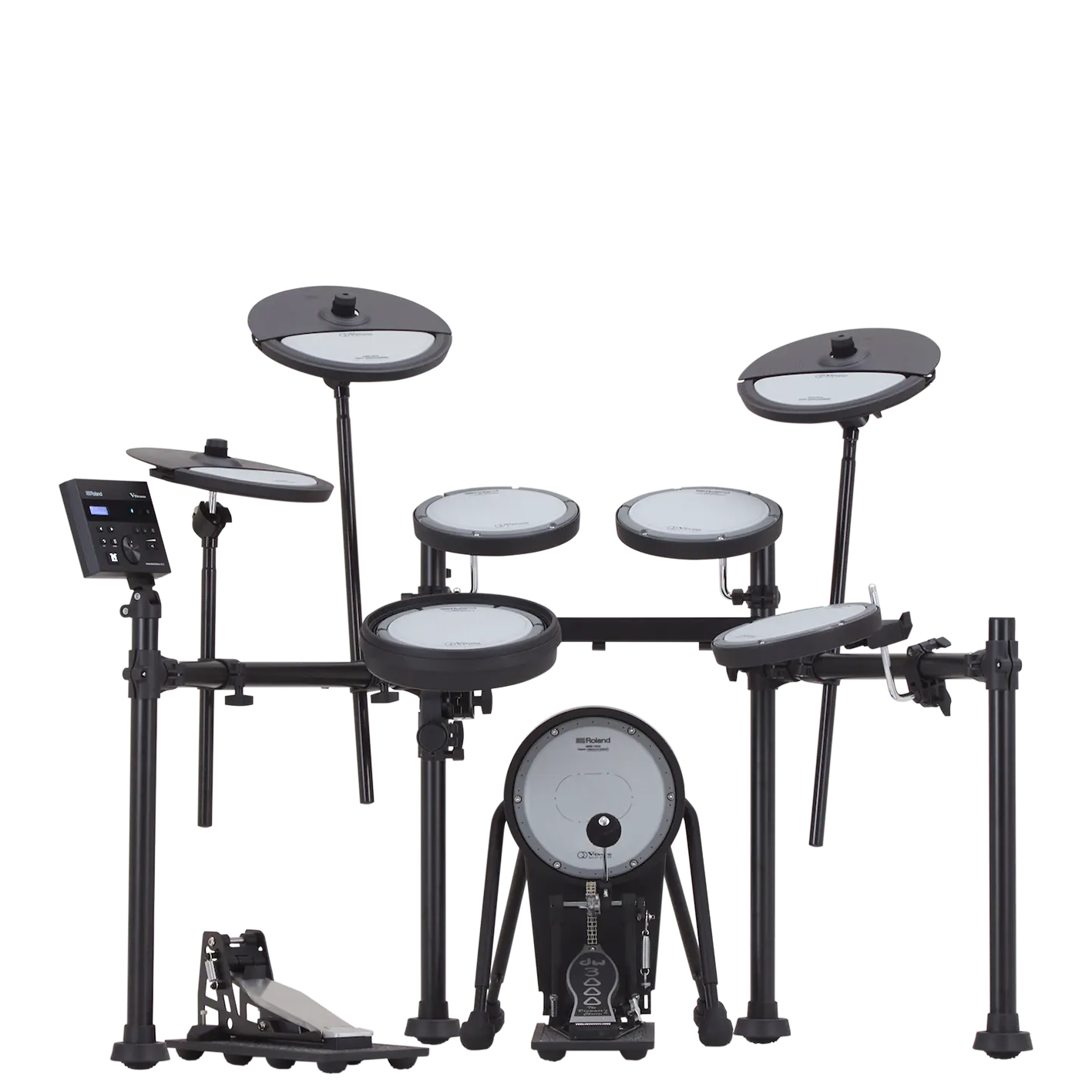
If pad noise and vibration is your number one concern when it comes to investing in e-drums, then Roland’s V-Drums Quiet Design kit is the one for you. We found Roland’s claims about significant noise reduction compared to a standard kit to be absolutely accurate, and you can’t go wrong with the mid-range TD-07 module.
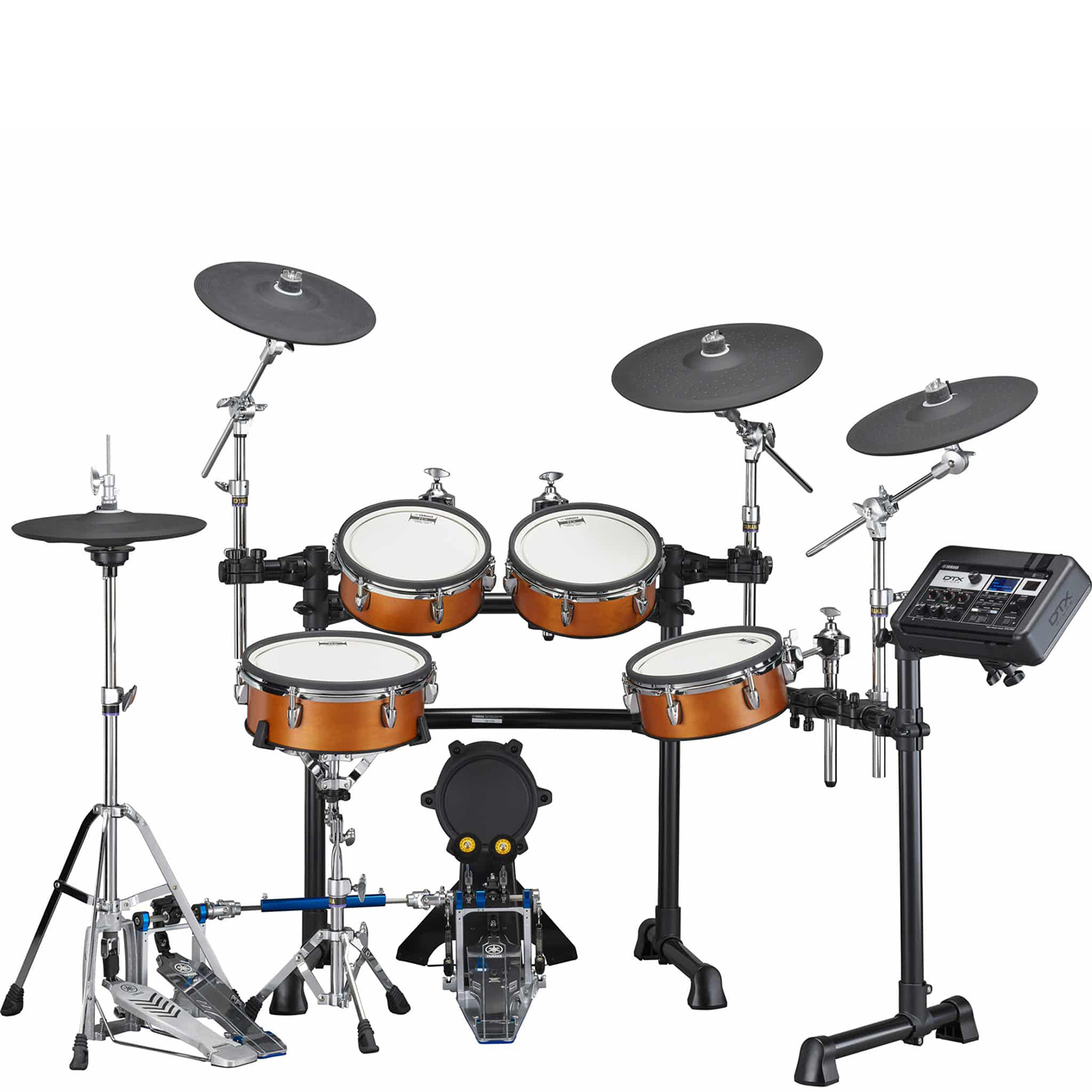
Yamaha consistently makes some of the very best e-drum sets on the market. The DTX8K-X is no different with a module that delivers 40 fantastic kit presets modeled on Yamaha's top-quality acoustic drum sets, all of which can be augmented with a range of effects, while the TCS silicone heads offer a credible alternative to mesh.
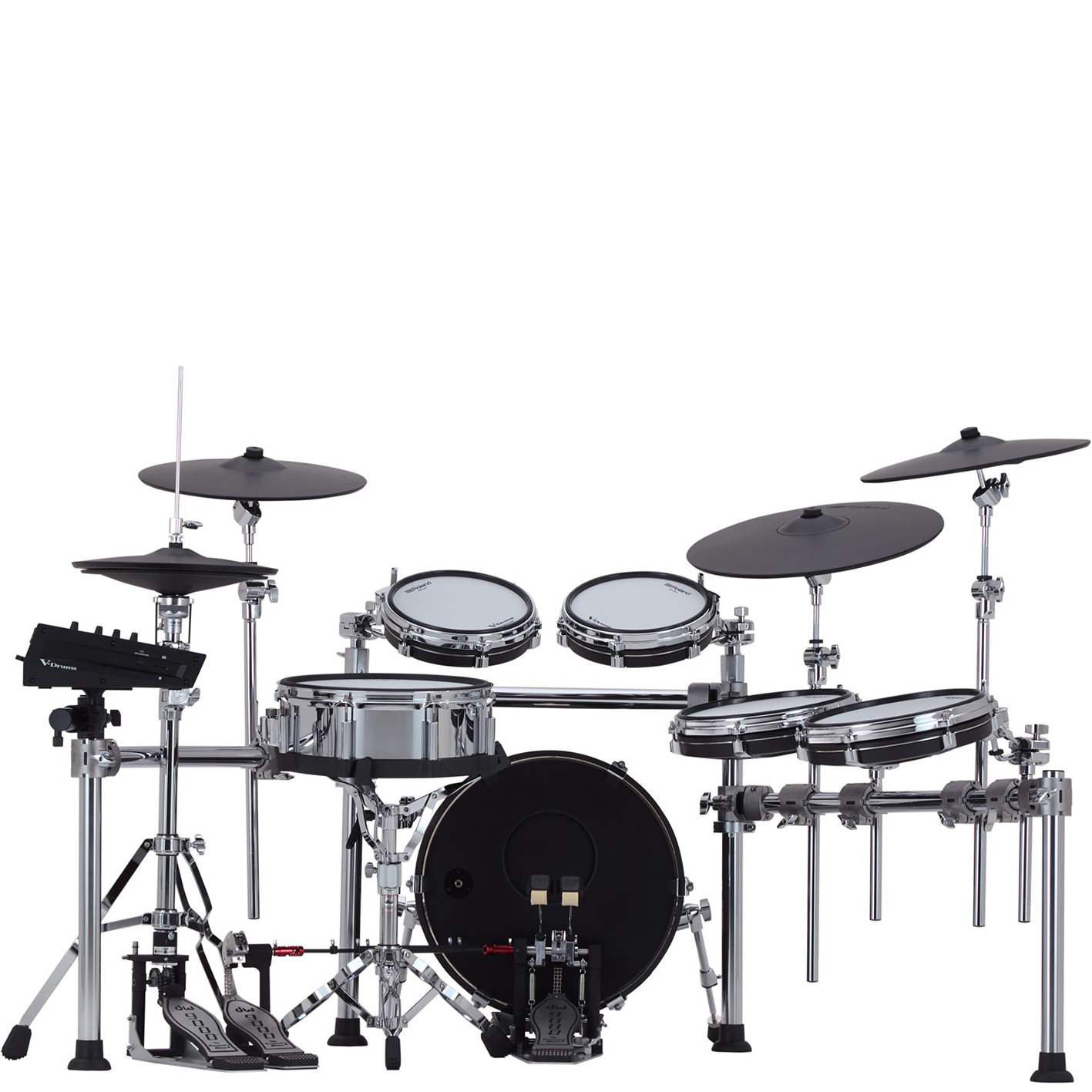
For this kind of money one would expect some pretty groundbreaking stuff. Thankfully, Roland hasn't failed to deliver with the formidable Soundworks-compatible, Roland Cloud-connected V71 module. We love how responsive the digital pads are too, particularly the PD-14DSX snare, complete with digital throw-off.
Best for beginners
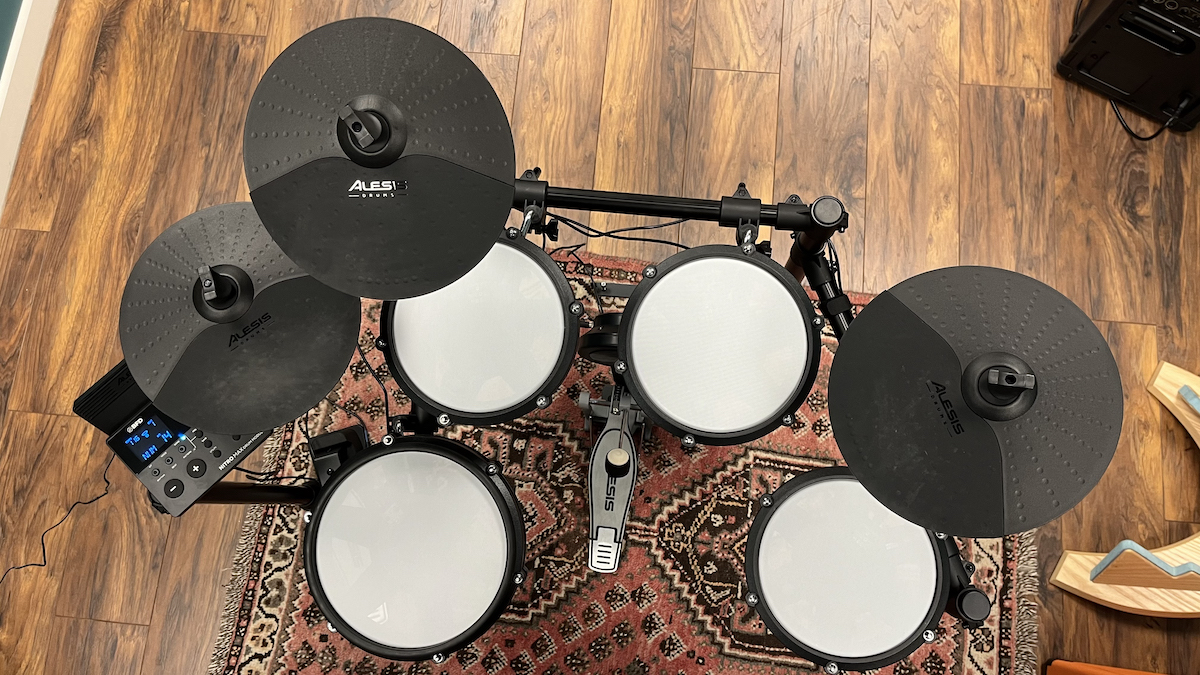
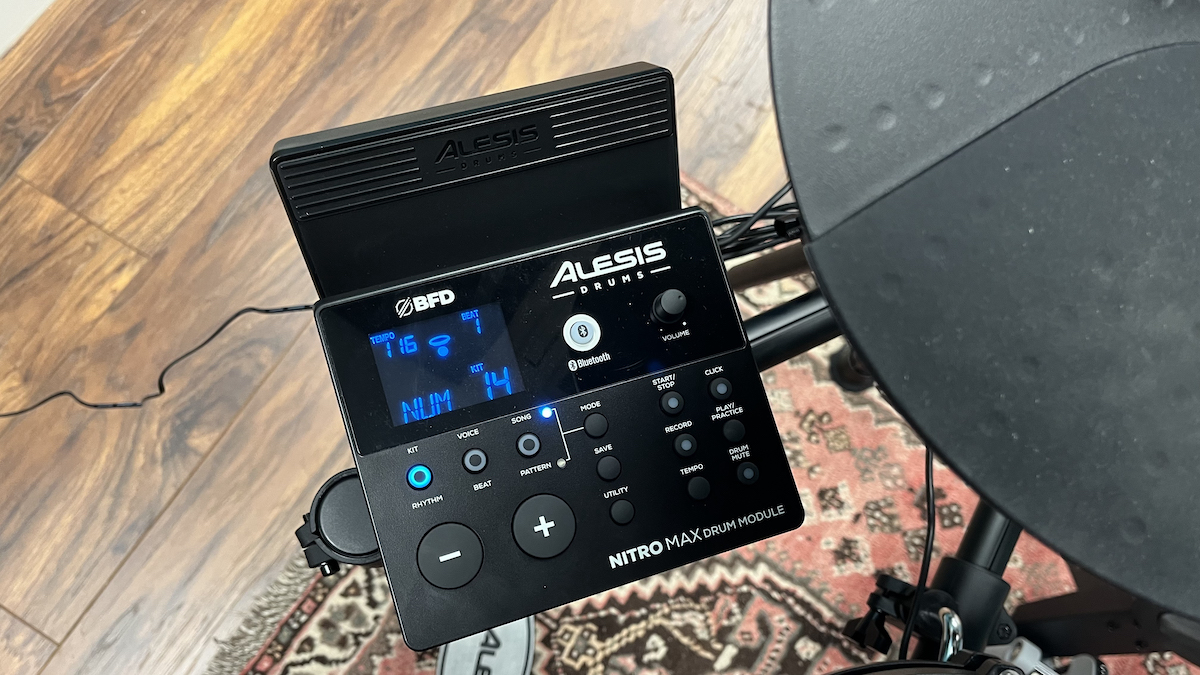
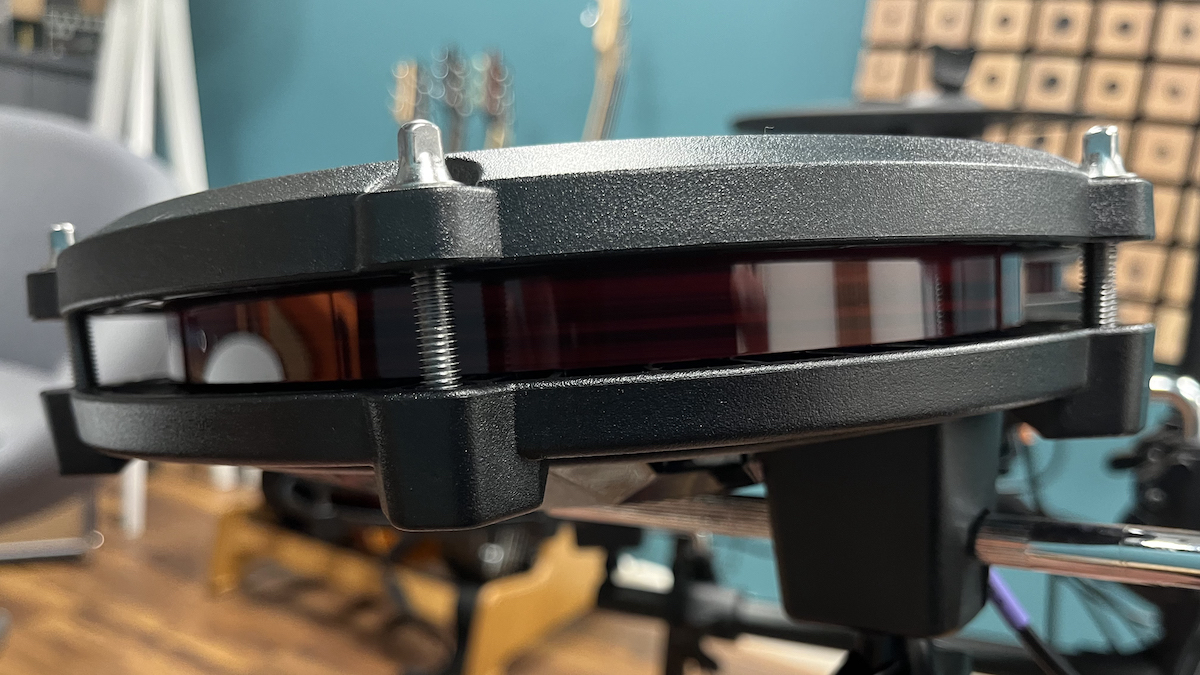
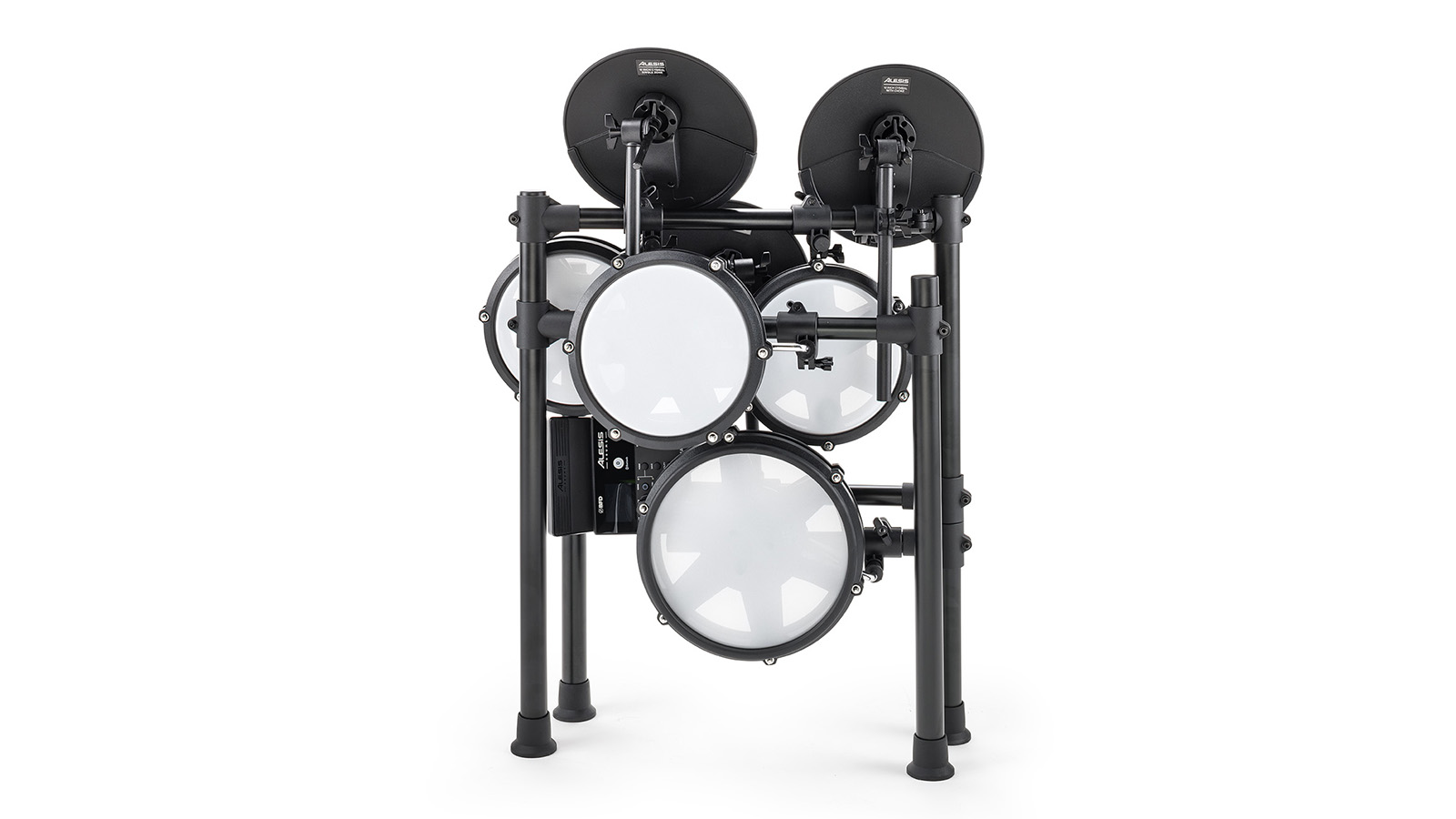
Specifications
Reasons to buy
Reasons to avoid
🥁 The Nitro max serves two types of drummer: if you’re a beginner drummer there is no better kit for the money right now. It sounds great, the module is a breeze to use and the mesh pads feel natural; the Nitro Max would also serve as a great home practice kit for acoustic kit drummers.
✅ Buy if you're a beginner on a budget: At the $/£400 price-point there is no better mesh-headed kit on the market right now, and the features are a step above anything else we've tested.
❌ Avoid if you need sturdier hardware: While the Nitro Max is more than usable, there are kits out there that deliver more robust pads and racks.
Build quality ★★★★☆
Ease of setup ★★★½
Sounds ★★★★½
Module ★★★★½
Overall ★★★★½
The lowdown: The Alesis Nitro Max supersedes and builds upon the best-selling Nitro Mesh kit, until now one of our favourite beginner electronic drum sets. While the hardware looks and feels very similar to that kit, a key Nitro Max upgrade is the module, which is the first of its kind to feature sounds from the excellent BFD drum sample library.
Configuration & build quality: The Nitro Max configuration includes a 10" dual-zone mesh snare, three 8” single-zone mesh toms, a bass drum tower with 6-inch pad - that I found worked just fine for my double pedal - a 10” dual-zone crash (which is choke-able), two additional single-zoned cymbals (one for hi-hat and ride cymbal), hi-hat controller pedal and a complete four-post drum rack. It’s a tried and tested set-up that I already loved on the previous model, and ticks all the right boxes on this new model in terms of feel and delivering an authentic playing experience.
My only reservation with the snare pad is that, being two-zone, if you want to play a cross-stick sound, you’ll need to assign it to the rim, which can be a touch fiddly. And, disappointingly, the single-ride cymbal pad means there is no separate bell zone.
Set-up: Everything you need to build the Nitro Max comes in one box, with instructions easy to follow. It took me a while - and plenty of patience - to get it set up exactly how I wanted it. There’s plenty of adjustment available in what is actually a very compact setup, but it took a few tries to get all four legs level and all pads where I wanted them whilst also eradicating excessive wobble.
Sounds: I found the BFD sounds to be noticeably better than those I’ve tried on other kits at this price point, particularly on kicks and snares which I found to be both rich and dynamic. The kit comes ready to go with 32 pre-ordained kits, but there’s space for 16 additional kits that you can spec up yourself from the available BFD sounds. This is a great way to customise a kit to your exact specifications. Additionally, the Nitro Max comes bundled with BFD Player software, which not only makes it easy to record your kit, but also gives you tools for deeper editing of sounds and access to an even bigger library of sounds.
Module: A key upgrade to the module is the inclusion of Bluetooth connectivity. This feature is common across most new e-kit launches, however there are fewer kits at this price point with that functionality, so it’s a great addition for drummers who love to play along to tracks on a smart device, or watch online lessons. I found connecting to be fast and reliable.
Further highlighting this kit’s beginner-friendly credentials, the package comes with 100 free lessons, a 30-day trial to drum-learning app Melodics, and a 90-day subscription to our favourite online drum lessons platform, Drumeo. For learning, jamming and improving on a budget, there is no better package right now. And if you’re a more advanced drummer looking for a cheap practice kit, I believe this would make a convenient and affordable home setup.

“I found the Alesis Nitro Max to be a very capable beginner or home practice kit. It’s well stocked with features and you’re unlikely to outgrow it for some time. The BFD sounds really set this kit apart at this level, and while there are a few concessions - like some limitations with pad zones - it’s a very solid kit for the money.”
Read more: Alesis Nitro Max review
Best on a budget
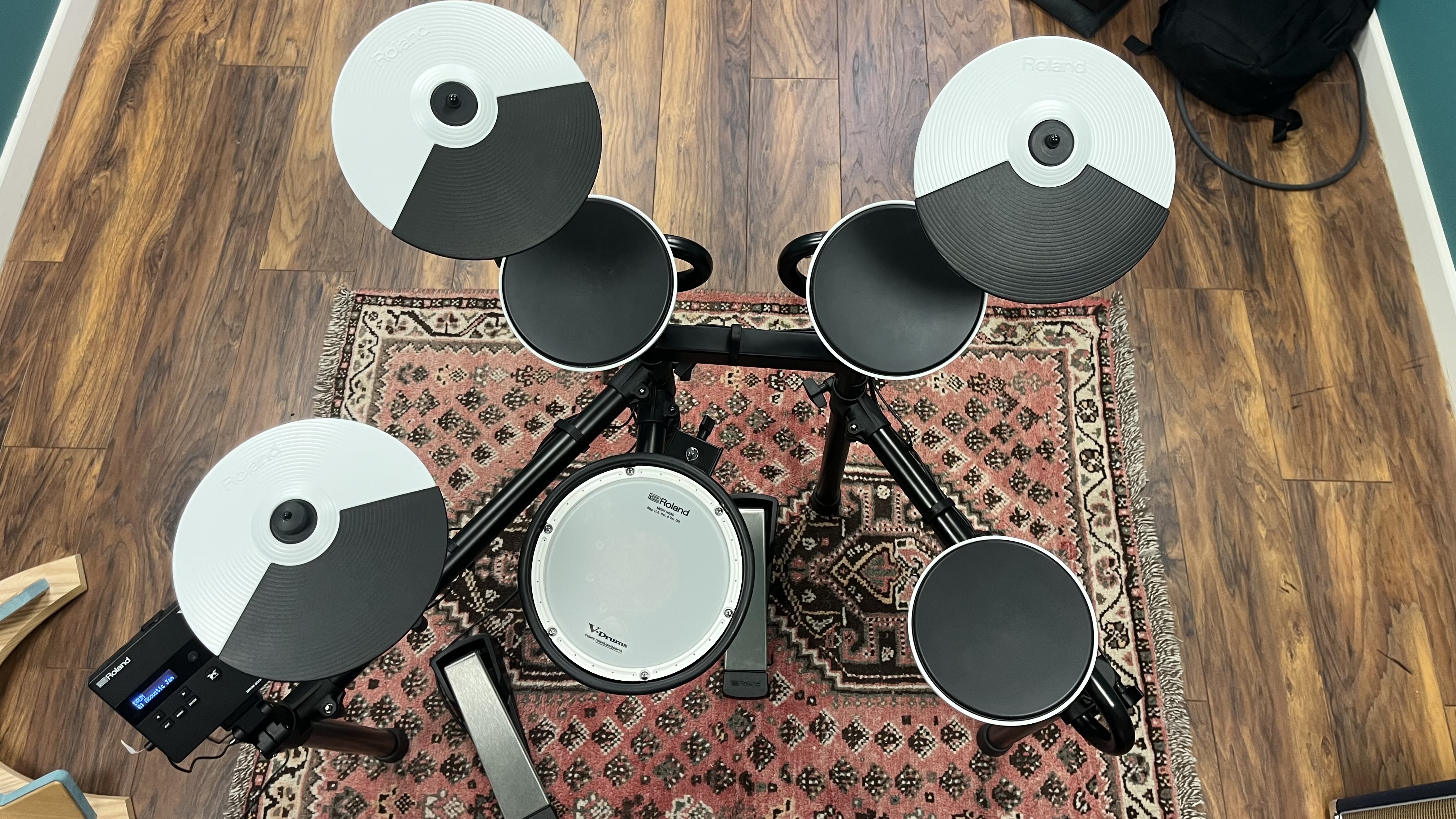
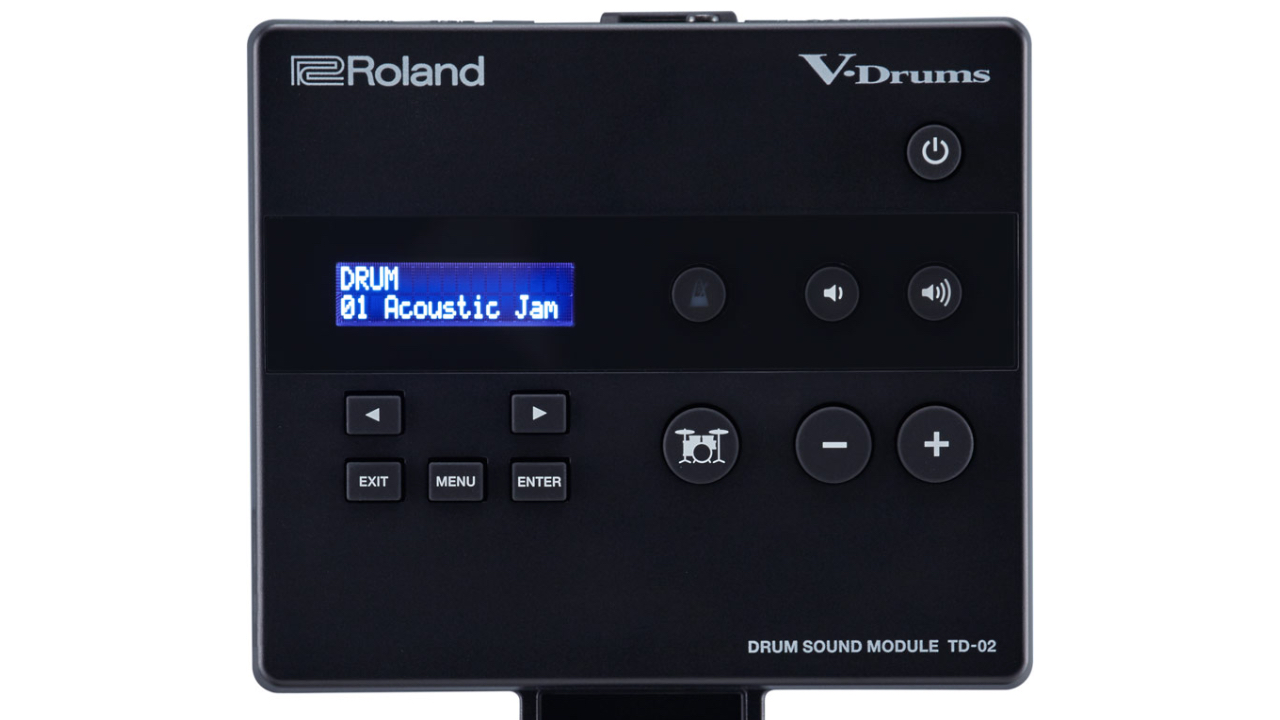
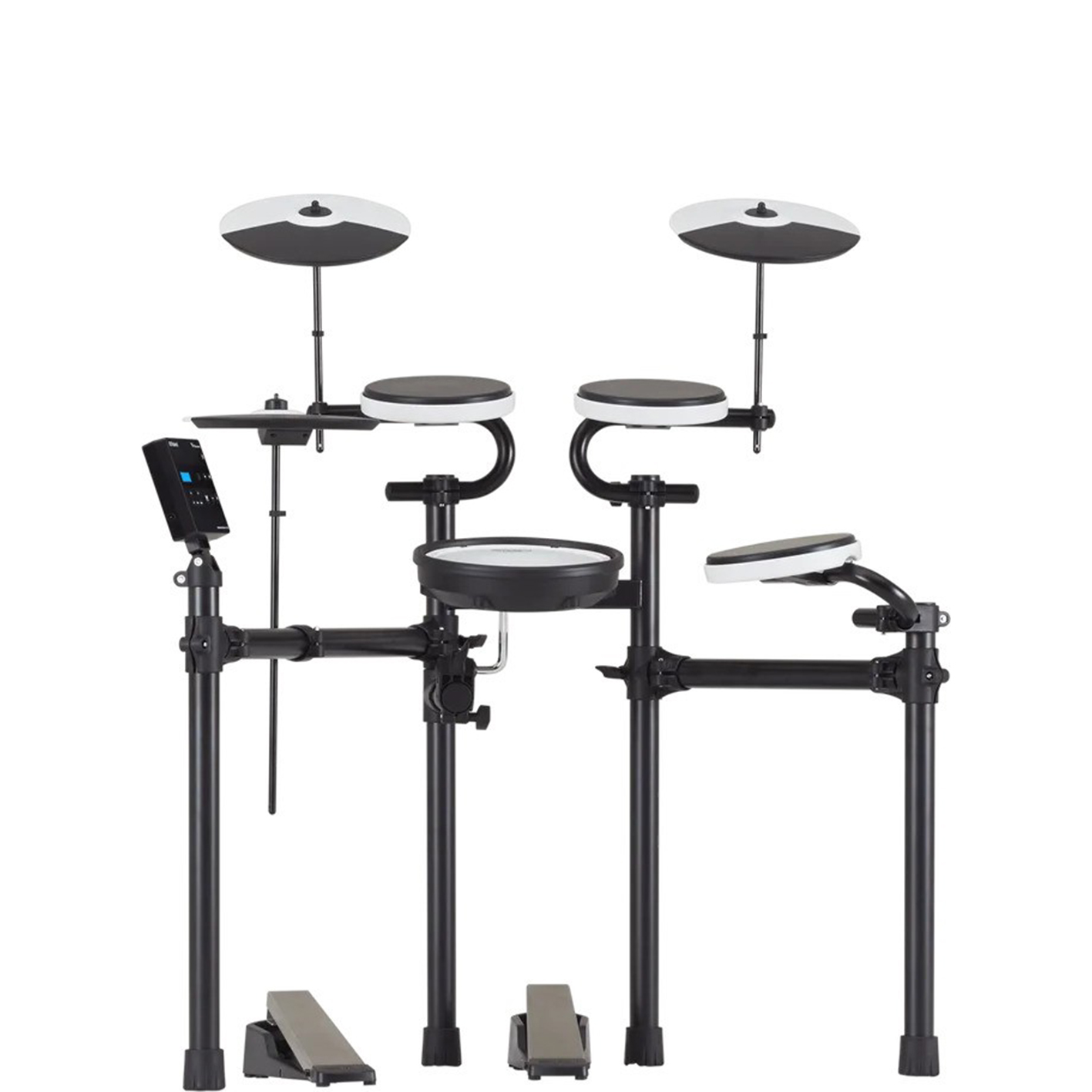
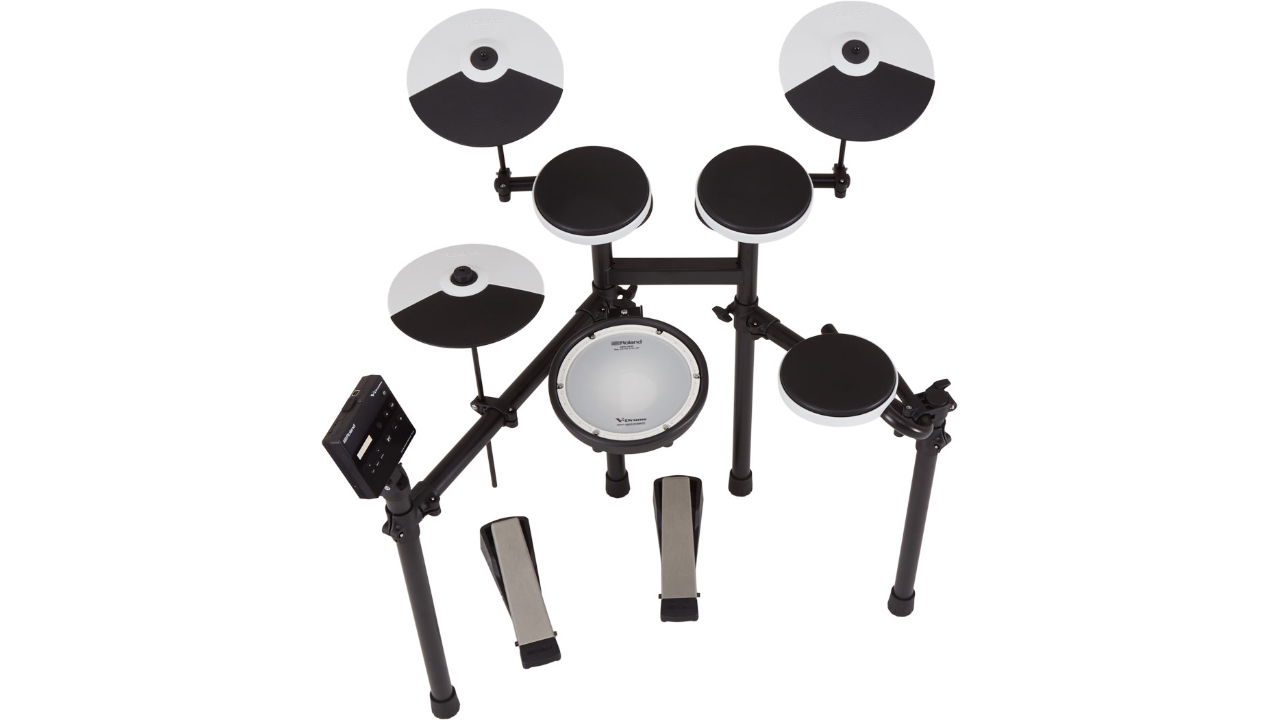
Specifications
Reasons to buy
Reasons to avoid
🥁 Like the Alesis Nitro Max, this is definitely a beginner-focused kit, but one that comes with Roland’s hallmarks of quality, including a fantastically sturdy, streamlined rack system. You will pay a little more for the name, but it won’t break the bank.
✅ Buy if you want quality build: Roland's hardware is superior to every other brand, so for a beginner kit that feels sturdy and built to last, this is the one.
❌ Avoid if you're on a strict beginner budget: Roland has built a strong reputation, but that reliability and trustworthyness will cost you.
Build quality ★★★★½
Ease of setup ★★★★☆
Sounds ★★★★½
Module ★★★★½
Overall ★★★★½
The lowdown: Roland's latest addition to the V-Drums family is a hugely compelling offering if you're just starting out. There are two flavours of TD-02, with the KV model offering a Roland dual-ply mesh head on the snare pad and a more robust 4-post rack. Both kits have neat and responsive bass drum and hi-hat controller pedals, and studio-quality sounds that are some of the best we’ve heard at this price.
Configuration and build quality: The kit I reviewed is the higher-level kit of the two in the TD-02 range. Both kits centre around the same TD-02 drum module, plus four drum pads and three cymbal pads for crash, ride and hi-hats. Hi-hat and bass drum are controlled by foot controller pedals rather than a tower and separate bass drum pedal, which isn’t our favourite method, but Roland executes it well with responsive pedals.
The headline feature of the 02KV setup is the tensionable mesh-headed PDX-8 snare pad which you’ll find on various Roland kits further up the ladder. You can play head rim and cross-stick sounds, which you don’t get with the Alesis Nitro Mesh. I have plenty of experience with Roland’s mesh heads and they are absolutely the market leaders.
The rack is slightly different on the KV model too, offering four points of contact with the floor rather than just three on the standard model. There’s a clear improvement in stability between the two, and the size means I was able to go into more detail with pad positioning.
Everything from the module, to the space grey tubing of the rack and cabling feels noticeably high quality and a step above other kits I’ve tested in this price bracket. I wouldn’t expect anything less from Roland at this point.
Set up: It took me about 45 minutes to set the kit up from scratch, which is about standard. Everything slots together logically and is a breeze to gear up the kit ready to play.
Our only reservation is that all adjustments require a drum key. Higher-end kits mostly employ thumb screws, which are less fiddly, easier to grip nd just more convenient in a hurry. I get it that concessions must be made somewhere to keep the price down, but this felt like the kit’s main shortcoming. That said, once you have things where you want them, it’s mostly a fit and forget setup.
Sounds: There’s deliberately not a huge range of kit sounds on offer here, with mostly acoustic kits and a small handful of electronic and percussion options – but they’re generally great, with plenty of variation and a nice depth to each kit; in fact, they’re some of the best native Roland module sounds I’ve heard in a long time. There’s not much scope for editing or creating your own kits, but this keeps the focus on playing the drums, rather taking you through a minefield of button bashing.
Module: My main observation is that the module is very easy to use. It’s pretty minimalist in terms of buttons - the focus here is on finding the right sound, selecting your kit and getting on with playing.
The TD-02 module also has Bluetooth capability for jamming to your music collection - a feature I've enjoyed seeing roll out to kits at the cheaper end of the spectrum - although you will need an adapter which comes at an additional cost. Add to this some comprehensive coaching functions for developing players and it’s clear that Roland has considered who, how and where this kit is designed for.
There are more affordable options out there (see the Alesis Nitro Mesh above), just as there are kits with more sounds and features, however during my tests I discovered that the TD-02KV represents a cohesive package that you’ll want to sit down at months (and hopefully years) after you’ve bought it.

“I found the TD-02 represented a step up from more generic entry-level electronic drum sets with plenty of usable features that you’d usually see higher up the food chain. It feels and sounds great and while you’ll pay a bit more than some brands, you’ll receive a solid and reliable platform that I’m confident will take you from beginner to intermediate.”
Read more: Roland TD-02KV review
Best for sounds

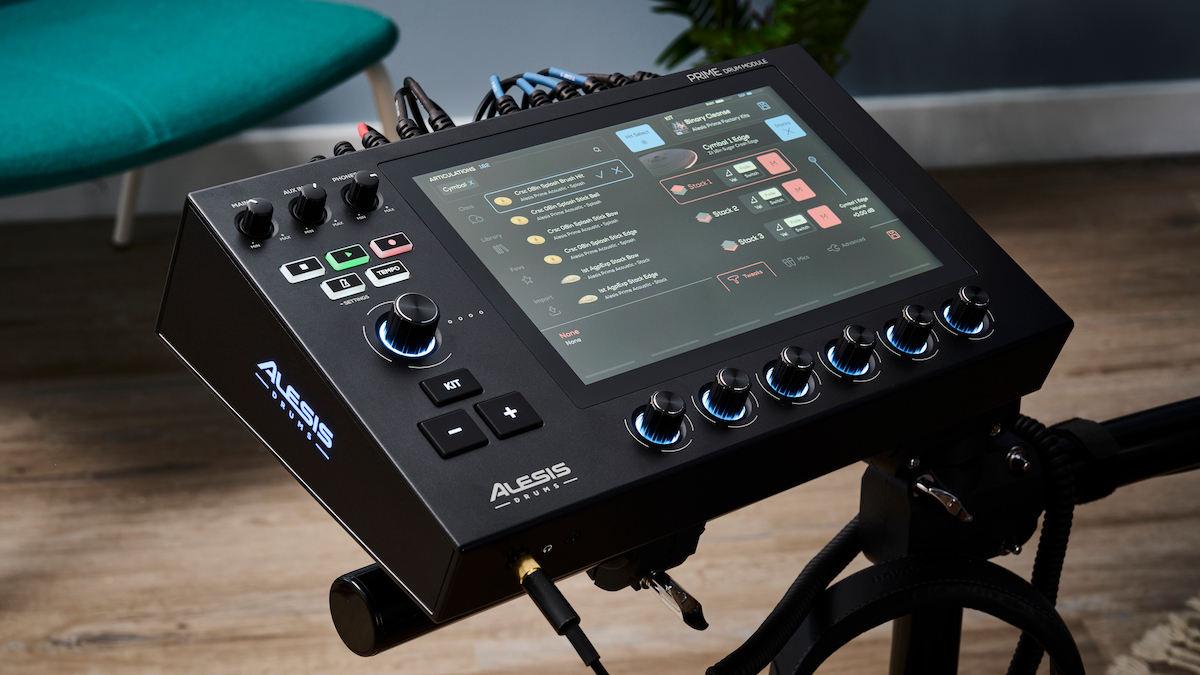
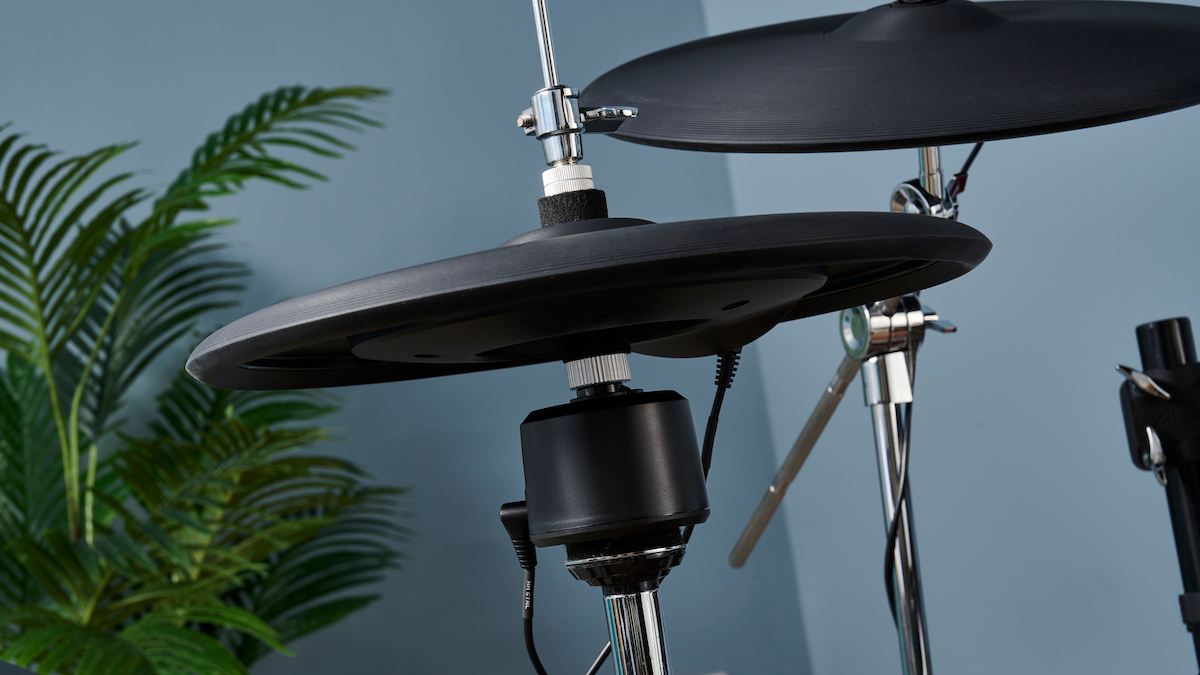
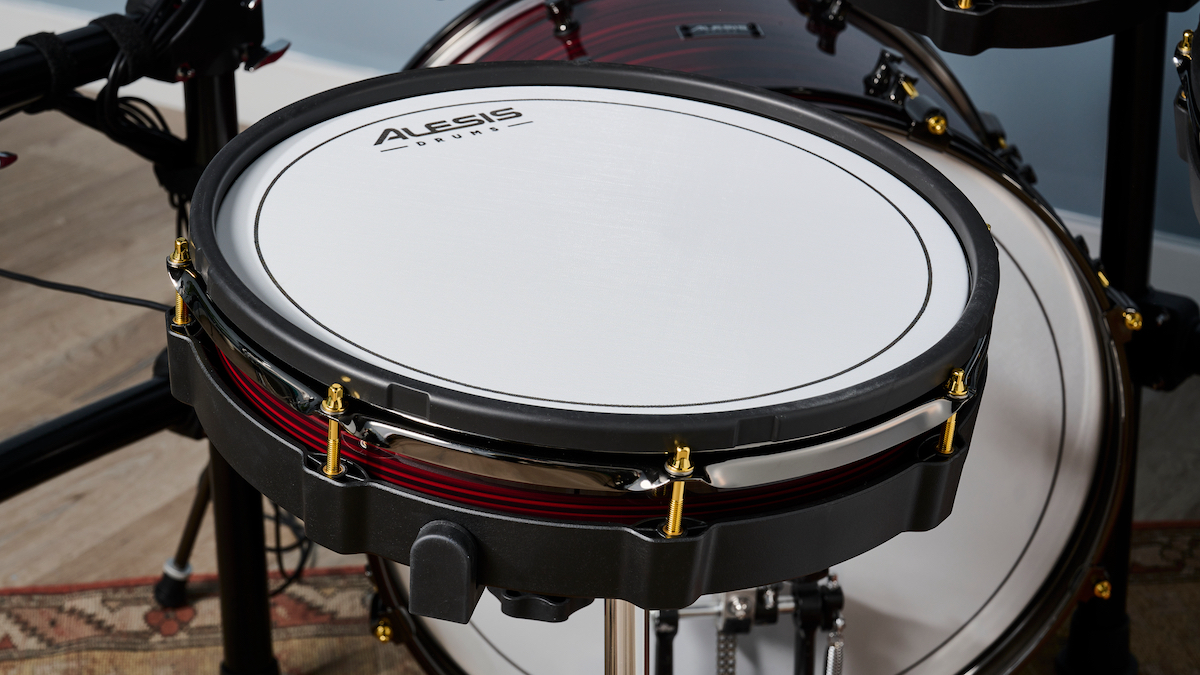
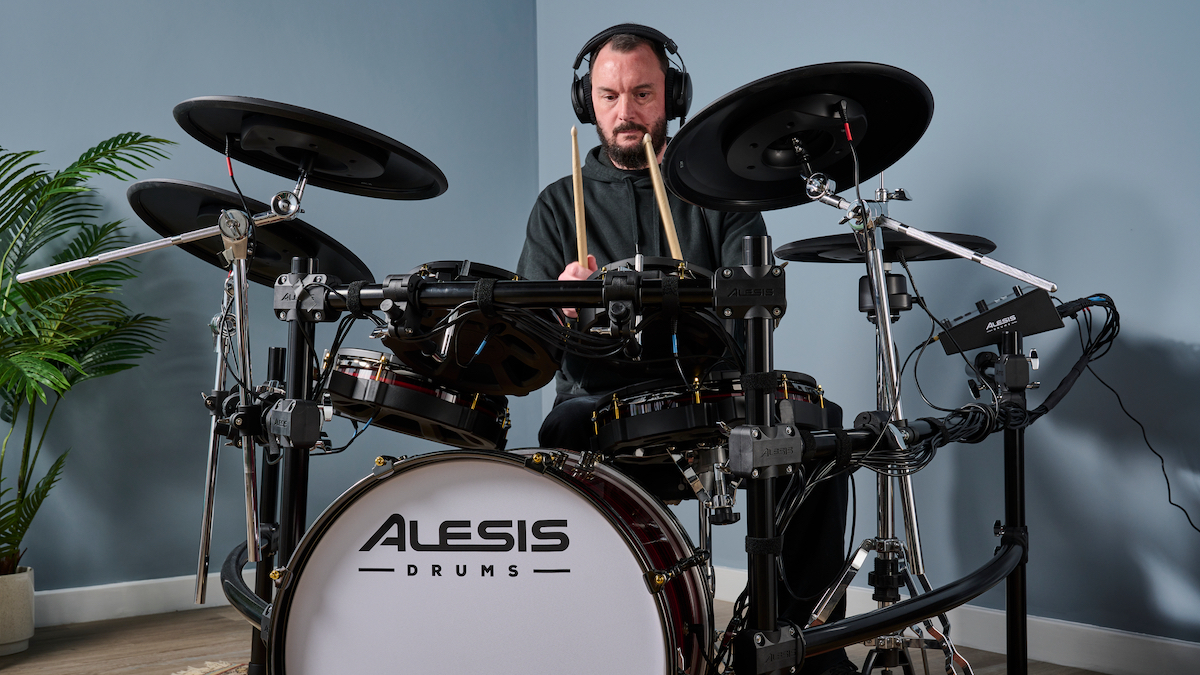
Specifications
Reasons to buy
Reasons to avoid
🥁 Drummers looking for leading technology, the best sounds available and a kit that’s going to be ahead of the curve for years to come, but at a sensible price.
✅ Buy if you want the best sounds available: If you want to play incredible sounds through an e-kit without needing a separate laptop and software, the Strata Prime is for you, with full-fat BFD built right into the module.
❌ Avoid if you're short on space: With larger pads, a 20"x14" bass drum, 10-pieces overall and a substantial rack, you'll need plenty of room to comfortably house this kit.
Build quality ★★★★½
Ease of setup ★★★★☆
Sounds ★★★★★
Module ★★★★★
Overall ★★★★★
The lowdown: It’s an incredibly exciting time in the e-kit world right now - seemingly every new launch brings with it some sort of fresh innovation, from wireless triggers to top-end features packed into budget kits. When I first sat behind this new flagship Alesis kit, I knew it was another game-changer. The main story here is the slick touchscreen module which comes loaded with the full version of BFD3 and 45GB worth of sounds. It’s the equivalent of hooking your e-kit up to a powerful laptop. This extra processing power and storage capacity means that you have at your fingertips an abundance of multi-velocity-layered and multi-mic’d samples all captured in top-level studios.
Configuration & build quality: There’s a full complement of mesh heads on this kit and they’re not dissimilar to acoustic dimensions with a 20” bass drum with full 14” deep shell, 8”, 10”, 12” and 14” toms and a 14” snare drum pad. Alongside the drums are Alesis’ triple-zone ARC cymbals, complete with 360-degree playable surface which we found to be incredibly satisfying and consistent to play. There’s no compromise on sizes here either, with a 14”, single-piece hi-hat, two 16” crash cymbals and an 18” ride delivering a supremely realistic layout.
The red swirl finish with black hardware and gold tension rods may not be for everyone - and I’d love to see more finish options available down the line - but I liked it personally.
The three-sided rack is adjusted using thumb screws at each of the chunky plastic clamps. Getting the kit set up took a while because of the larger dimensions and higher pad count, but once everything was mounted I took great pleasure in dialling in the Strata Prime to match my usual acoustic kit layout.
Sounds: Thanks to a combination of the mesh pads and those densely-sampled BFD sounds, I found the kit to be a total joy to play. Every dynamic of my playing was reproduced effortlessly and authentically and almost every kit is usable right from the box. As with the desktop version of BFD, there are loads of tweaks that can be made to each kit and individual sounds, from EQ and compression, to loading sounds on top of each other using the super cool Stacks feature. This is a kit where you’ll find a configuration you love right from the box, or you can spend hours dialing in your ideal rig. Take it from me, messing with settings and dialling in your sounds is addictive.
Module: Having a full colour touchscreen at your fingertips rather than a splay of rubber buttons and a tiny screen is revolutionary. Yes it took me a while to locate everything I needed, but I’m so used to interacting with my phone and tablet that tapping and scrolling around was second nature. I found diving deep into sound editing much more agreeable on this kit thanks to the larger screen real estate and touch interface compared to, say the TD-27 module of my own Roland VAD-507 kit.
A recent firmware update has added Bluetooth audio to the kit (one of our only real gripes at launch was the presence of Bluetooth MIDI only). So the only place the Strata Prime loses marks is the fiddly approach to getting cross-stick working. We go into more detail on that in our full review.
Whether you’re looking for a super slick practice kit, or something you could use in a professional live or recording scenario, I think this kit is the most future-proofed but realistically-priced electronic drum set on the market right now.

“Alesis has hit the sweet spot between forward-thinking features and realistic pricing, and all at a very high level. It’s not without minor niggles, but overall, the Strata Prime is pushing in the direction that drummers are screaming out for with the best sounds around, a beautiful touchscreen module and excellent hardware.”
Read more: Alesis Strata Prime review
Best under $/£1,000
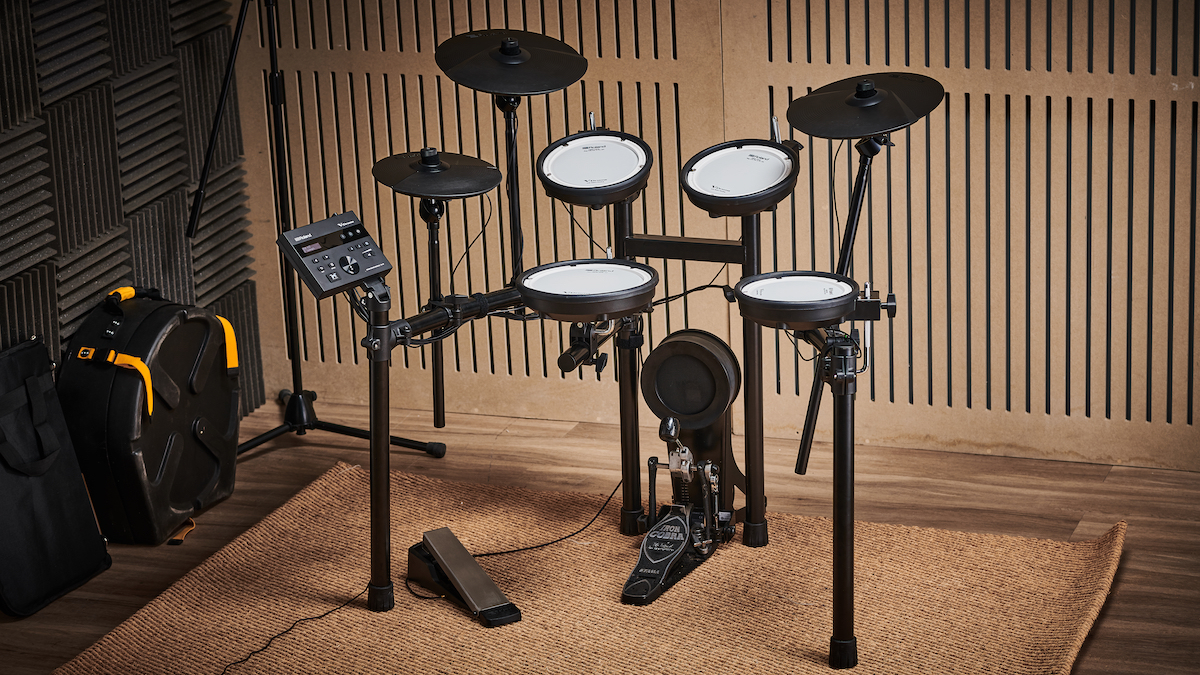
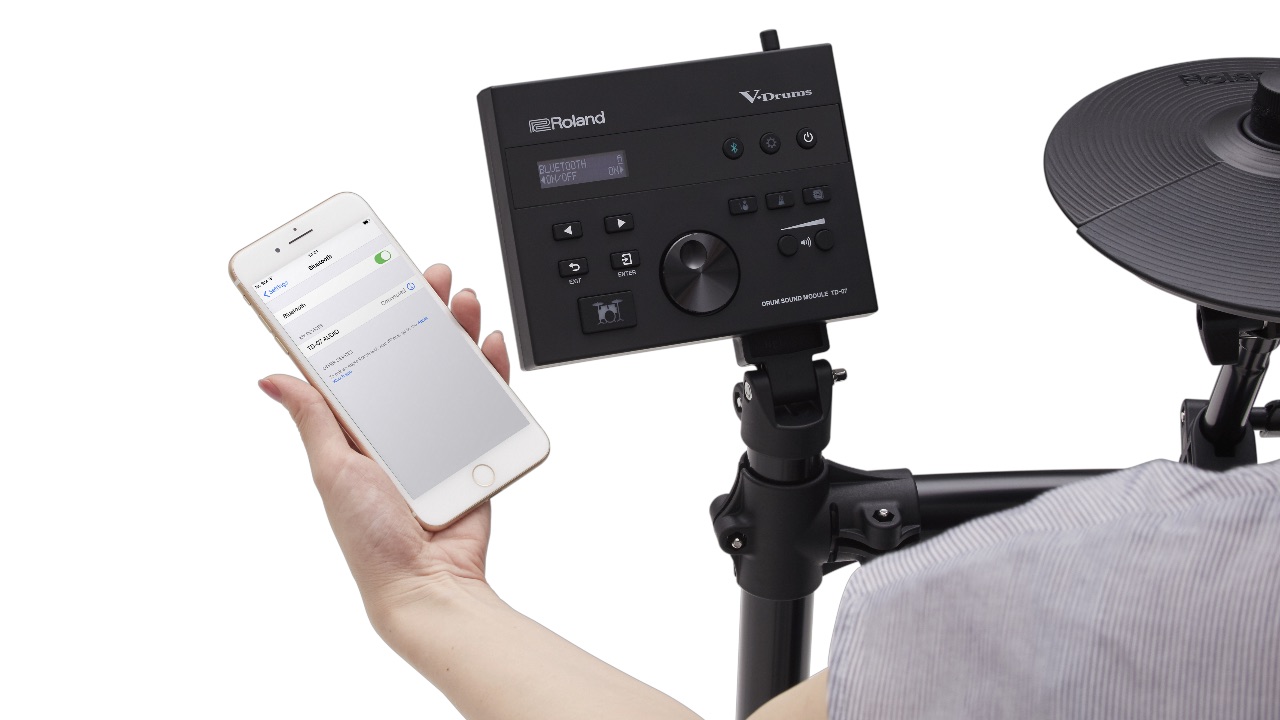
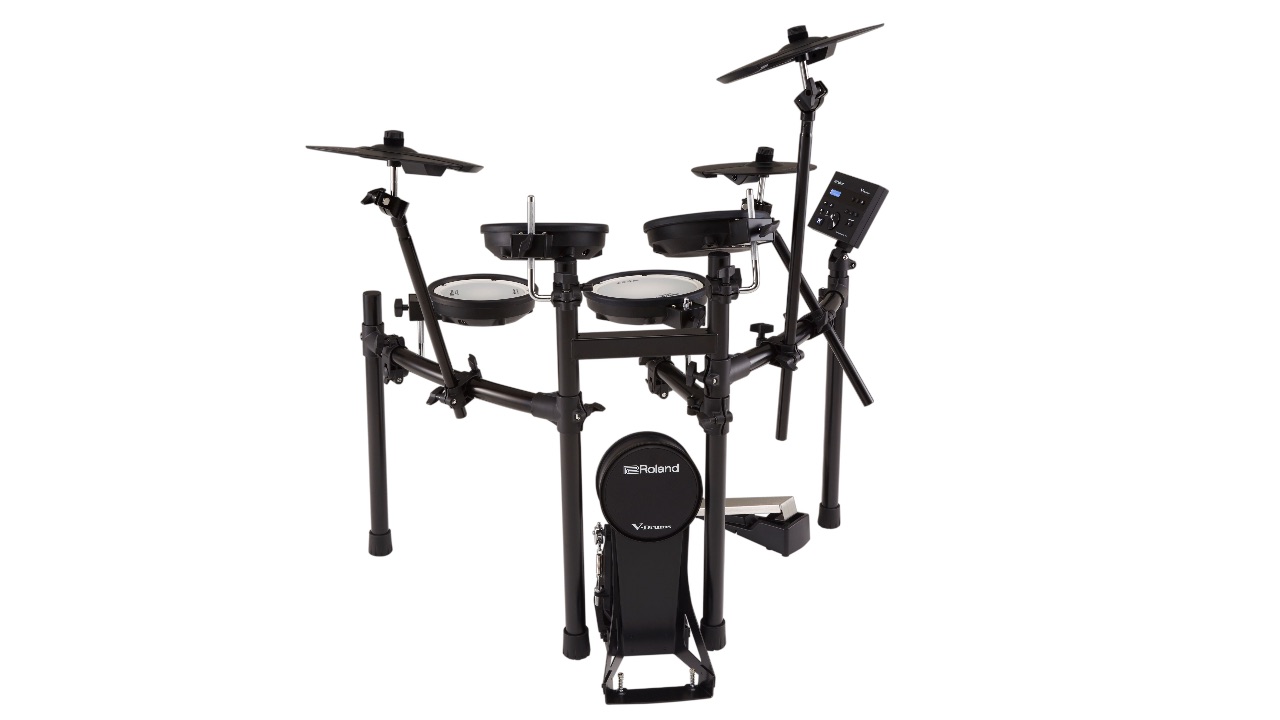
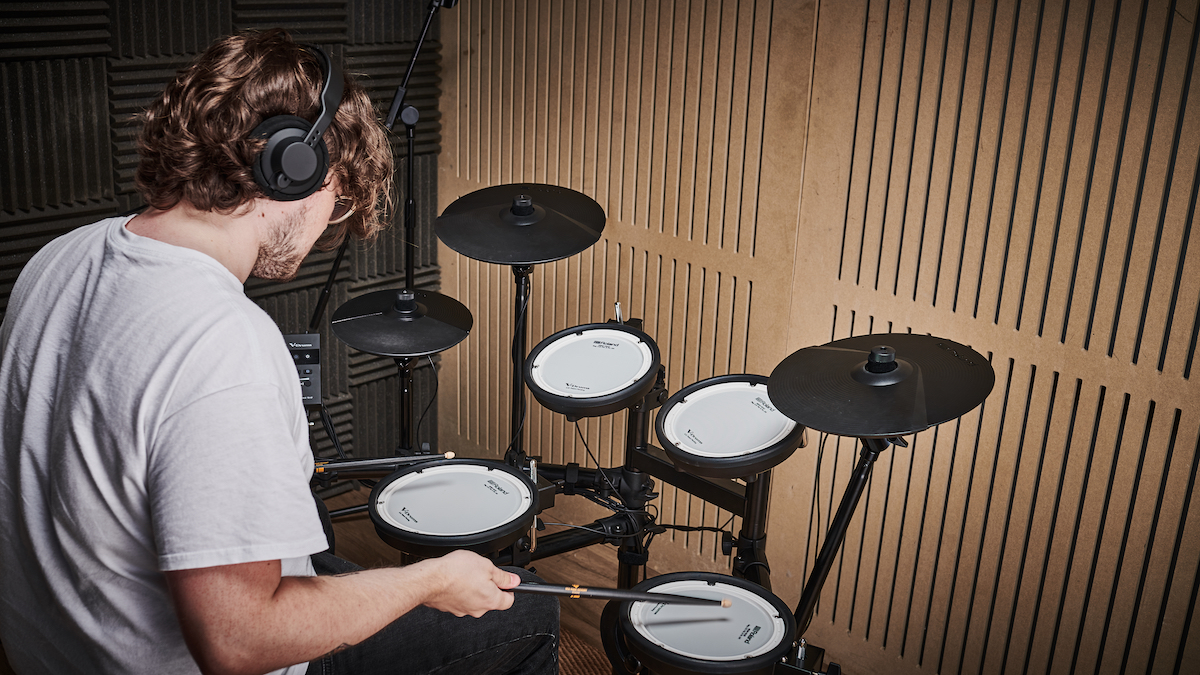
Specifications
Reasons to buy
Reasons to avoid
🥁 Confident beginners, intermediate drummers and acoustic players with a bit of budget for a home practice kit.
✅ Buy if you're short on space: Not only is the TD-07KV a well-equipped beginner to intermediate kit, it also has a pleasingly compact footprint, making it ideal for small spaces.
❌ Avoid if you want a stand-mounted hi-hat: The TD-07KV comes with a hi-hat pedal controller. You'll need to pay out for the 07KVX if you want stand-mounted hats.
Build quality ★★★★½
Ease of setup ★★★★☆
Sounds ★★★★½
Module ★★★★★
Overall ★★★★★
The lowdown: With Roland's patented, tuneable, dual-ply heads across the snare and toms, plus a standalone kick drum pad, the TD-07KV is one of the most affordable, no-compromise setups in the V-Drums family, and one of the best intermediate kits we've tested in a long time. Couple the feel of the mesh pads with the expertly-captured sounds and you have the ideal platform for getting started or developing your playing, on a kit that will last you many years to come.
Configuration & build quality: There have been no compromises made with this kit. In the box you get a full complement of Roland dual-ply mesh heads. For your bass drum there a vertical bass drum pad played by a bass drum pedal (which isn’t included). The cymbals are dual-zone and chokeable, too.
I love how compact this kit is - it’s ideal for small apartments or the corner of a busy bedroom. The PDX-8 and PDX-6 pads are slim, so you can really optimise their positioning, and because they’re so shallow you can get your legs closer too.
Set-up: As with most Roland kits I’ve tested, everything comes clearly labelled and neatly presented in the box. Instructions are clear and easy to follow and there are no complaints from me about the building process. With everything mounted to the rack - which took me about 30 minutes, pads then connect to the module via a loom cable with a single connector, helping to avoid the common spaghetti look you get with other kits.
Sounds: You get 143 sounds on the TD-07 module spread across 20 preset kits from the Roland factory, and there’s a decent variation between acoustic, electronic and percussion sounds, with most delivering a fair degree of realism. You can add effects, ambience and tweak tuning, dampening and more. There’s space to store up to 50 separate setups so you can set to with creating your own custom kits, although the module can be a little fiddly to master so make sure you factor in some time to learn it.
Module: The TD07 module was brand new for this line, rather than borrowed from another series and I love how compact it is, only delivering the functionality you really need.
On-board Bluetooth allows you to jam with your music library wire-free. And the Bluetooth is native to the module rather than needing an adapter (at extra cost) like you see with other Roland models.
This kit has a fair weighting towards learning, which will appeal to budding players (and their parents). Built-in coaching modes will help keep your timing in-check and Roland has seen fit to bundle 40 free online Melodics lessons with each kit. Finally, there's a USB MIDI/audio interface which will allow you to connect to your computer for recording.

“The TD-07KV could be a very capable kit for a beginner who is confident they will stick at it, an established player who is returning to the kit after a break, or a great practice and demo recording kit for an acoustic kit player. It delivers both convenience and connectivity, all for under a grand.”
Read more: Roland TD-07KV review
Best for live
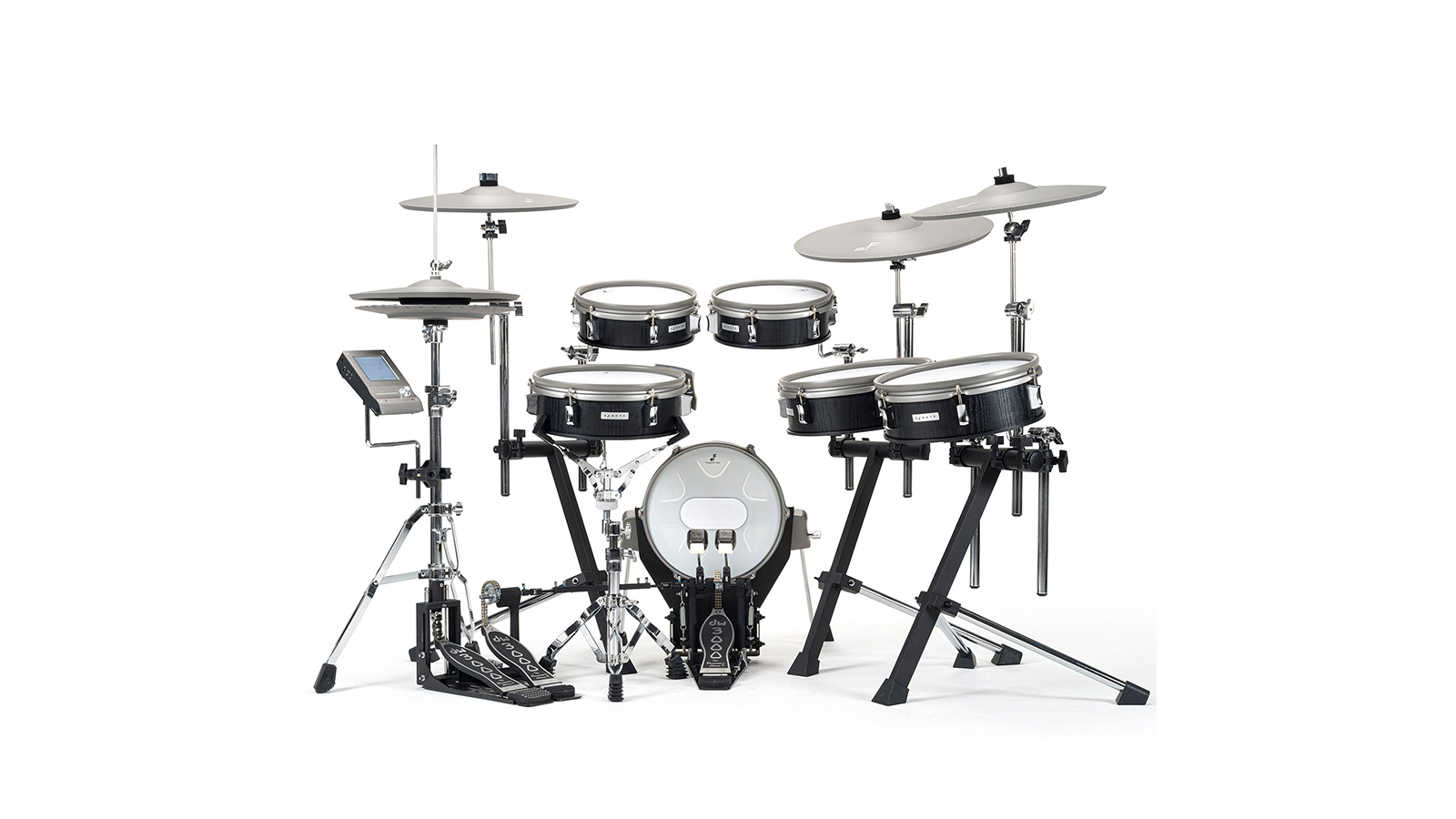
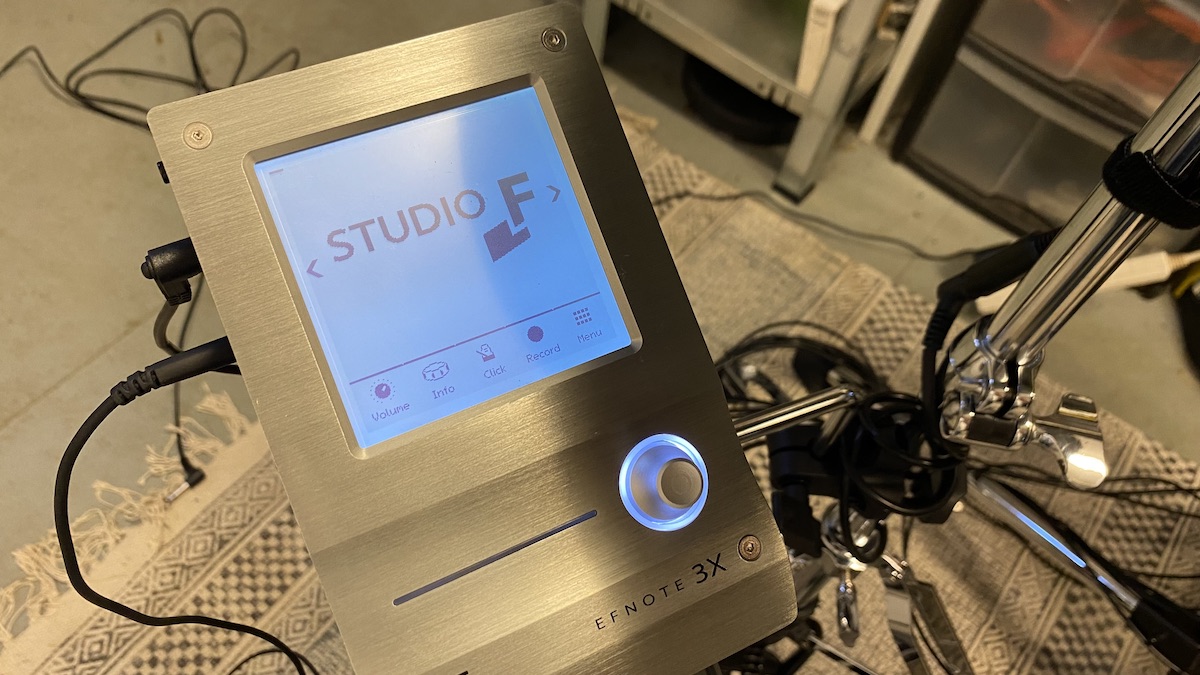
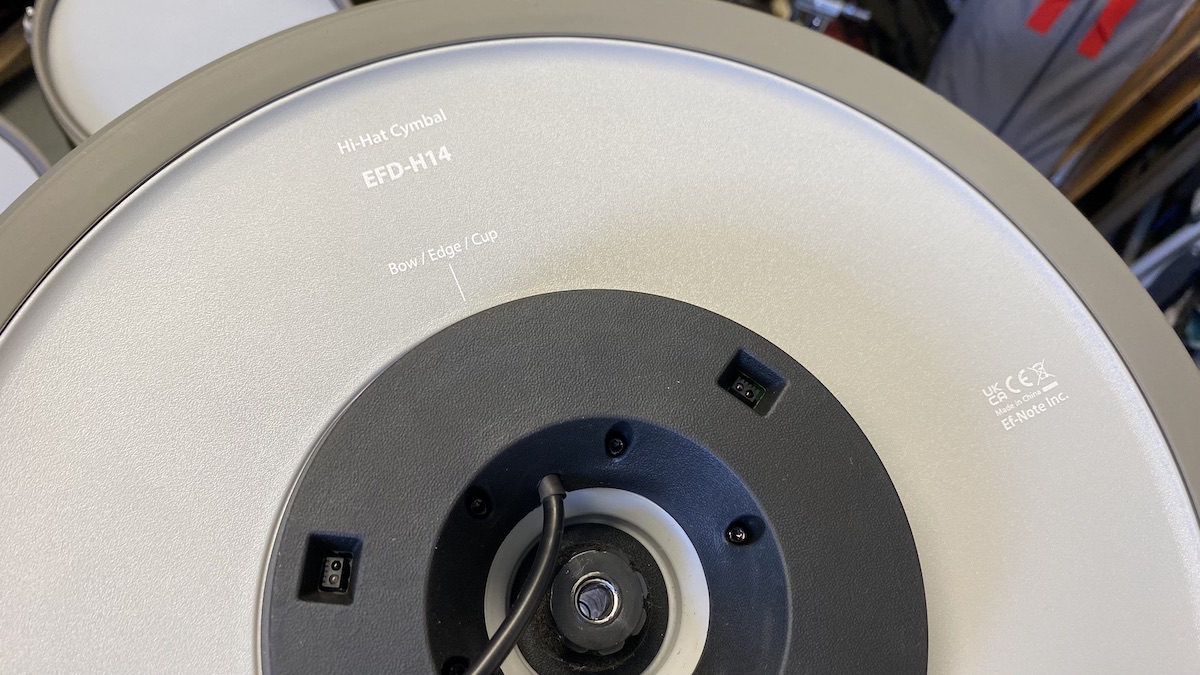
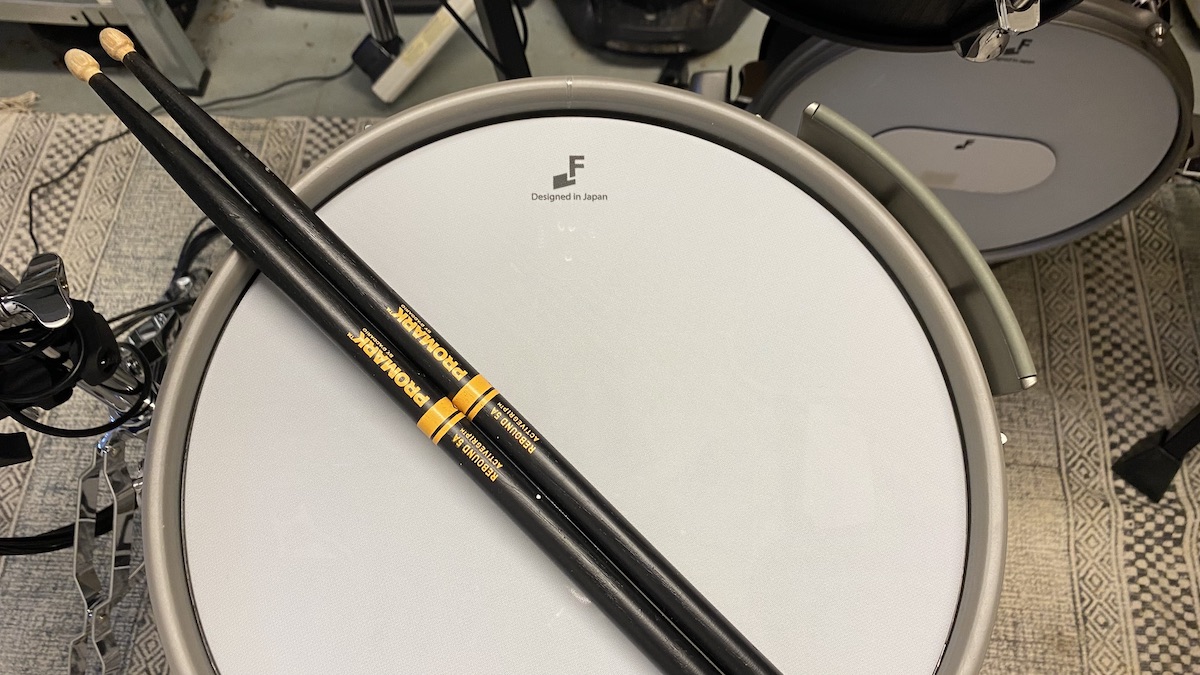
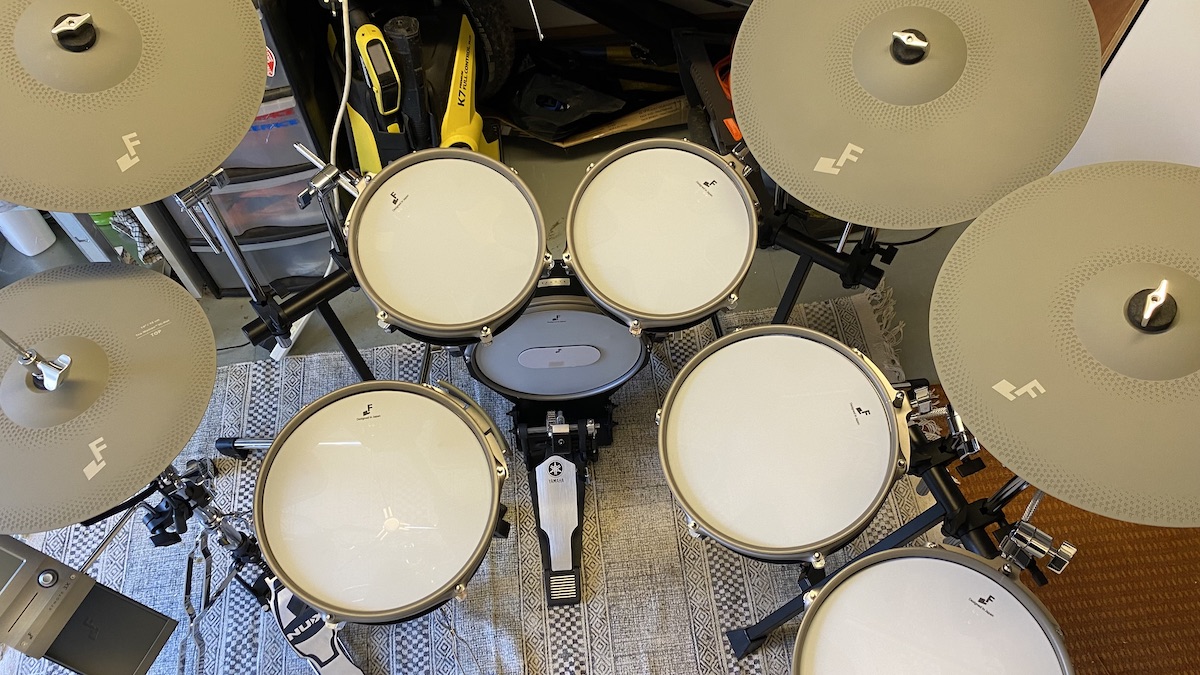
Specifications
Reasons to buy
Reasons to avoid
🥁 Drummers looking for an incredibly capable high-end kit that focuses on high-quality sounds and striking looks over unnecessary frills. This is a kit I would happily play live.
✅ Buy if sounds are most important to you: While you don't get a huge number of sounds native to the module, they are the best we've heard at this price point.
❌ Avoid if you hate menu diving: There's a learning curve to the EFnote module, so if you want a plug and play kit you'll need to shop elsewhere.
Build quality ★★★★★
Ease of setup ★★★★☆
Sounds ★★★★½
Module ★★★★★
Overall ★★★★½
The lowdown: With decades of experience working for Roland and ATV, EFnote’s product designers have hit the ground running since launching the brand in 2018. Both the technology and striking visuals across their range has made EFnote a brand to watch, and despite being one of their cheaper kits, we think the 3X is fantastic and just the tip of the iceberg of what EFnote offers.
Configuration & build quality: This 10-piece kit features mesh heads across the snare pad, bass drum tower and all four toms. Each pad sports a shallow shell in a textured black oak finish which pairs nicely with the grey rims and EFnote’s beautiful signature grey cymbals. I found the stand-mounted 14” hi-hat pad to be a standout feature of this kit in my testing. It uses optical sensors to map the motion of the cymbal in 3D, which produced incredibly realistic responses and reactions to my playing. The other cymbals - 2x 16” triple-zone crashes and an 18” triple-zone ride - felt fantastic under my sticks too, with a re-assuring heaviness, just like a real metal cymbal
Everything on this kit feels built to survive the long-haul. If ever you were looking for an e-kit to take out on the road, EFnote’s gear has so far proven to be more than capable.
Set-up: The leftfield approach of mounting pads to a trio of tripods is certainly innovative and provides cleaner looks out front, but having set up countless rack-mounted kits in the past, this one took me a minute to get my head around and really get the kit set up to a point where I was happy with both positioning of pads - which aren’t light - and overall kit stability. Once there though, I was very happy with how the kit felt. Although I wasn’t (and still am not) completely sold on the look.
Sounds: The full stereo on-board sounds, although relatively limited (16 preset kits with space for 34 user kits), are fantastic and almost 100% usable out of the box without any editing. There’s a kit on the module to suit almost every setting you can imagine. And if you can’t find it, you can create one, dialling in a range of effects including reverb, ambiance and EQ, as well as muffling and tuning.
Module: The minimalist module - complete with touchscreen and a single physical control - is certainly a break from the mainstream and, despite some niggles I experienced with screen sensitivity and some pretty involved menu diving, there’s plenty to shout about too.
I love how much sound editing capability there is at your fingertips. And that’s where this kit shines - once you’ve taken the time to dial in a fantastic sound, you almost set and forget. In the end, I was treating this kit like my acoustic kit: ready to go at all times with a sound that I love every time I put my headphones on.
The design is great too, the brushed aluminium chassis blending perfectly with the kit, and I like the approach of mounting the module off the hi-hat stand where it’s tucked away, but accessible as and when I needed to make adjustments.

“Beauty is in the eye of the beholder, but I think EFnote have really nailed the visual aspect of this kit, breaking up the logjam of pretty standard designs in the e-kit world, with awesome looking pads and module. The hardware is seriously impressive too; particularly the cymbals which have not been bettered for me since I reviewed this kit. The module has a couple of light niggles I’d like to see fixed and the tripod mounting system proved divisive, but this is a kit that sounds awesome and feels great to play.”
Read more: EFnote 3X review
Best low volume
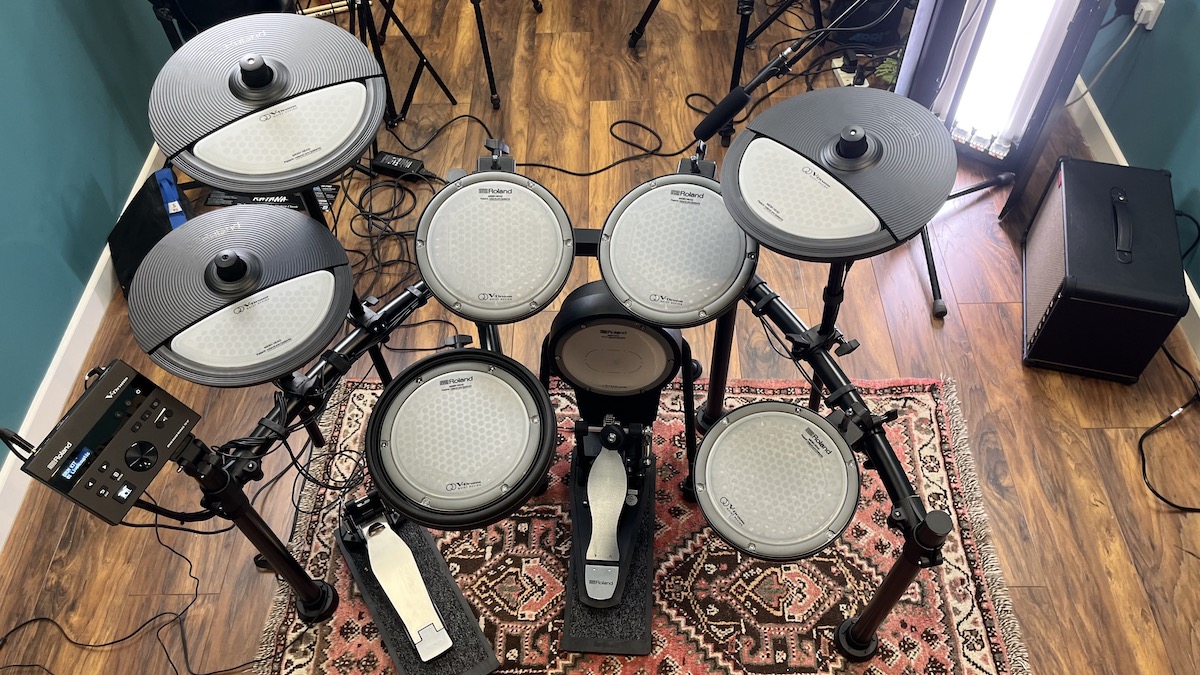
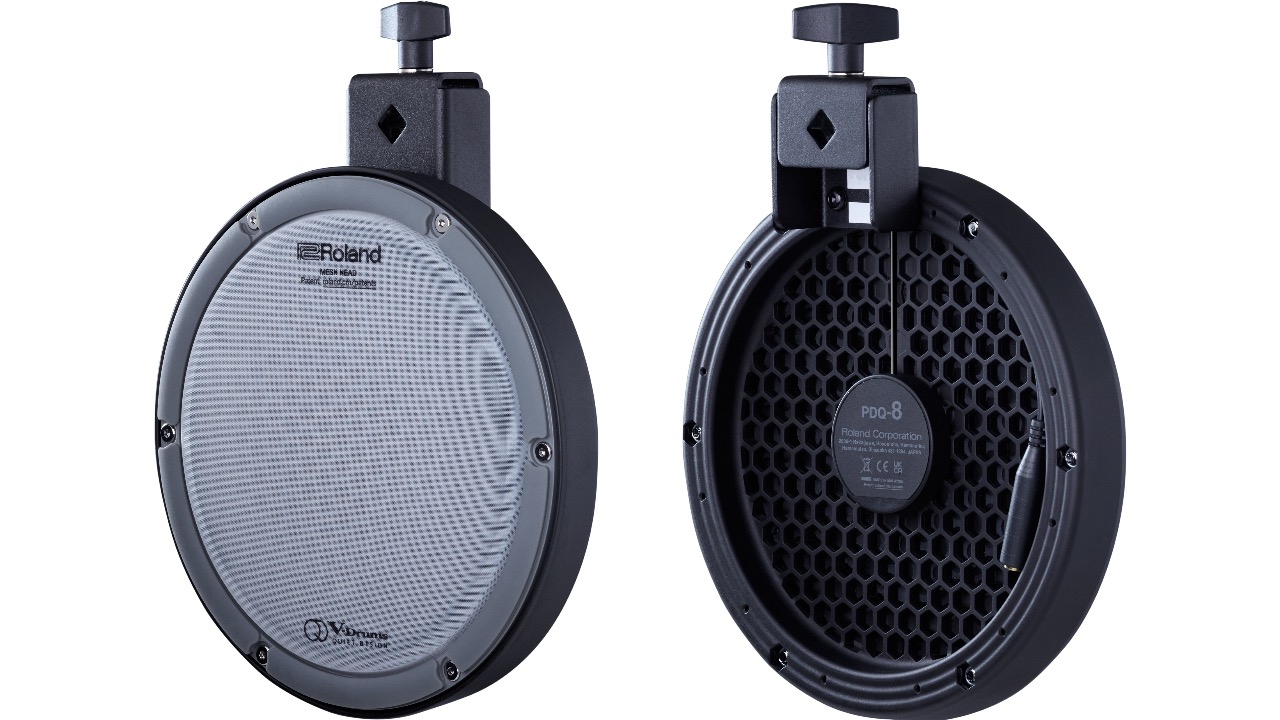
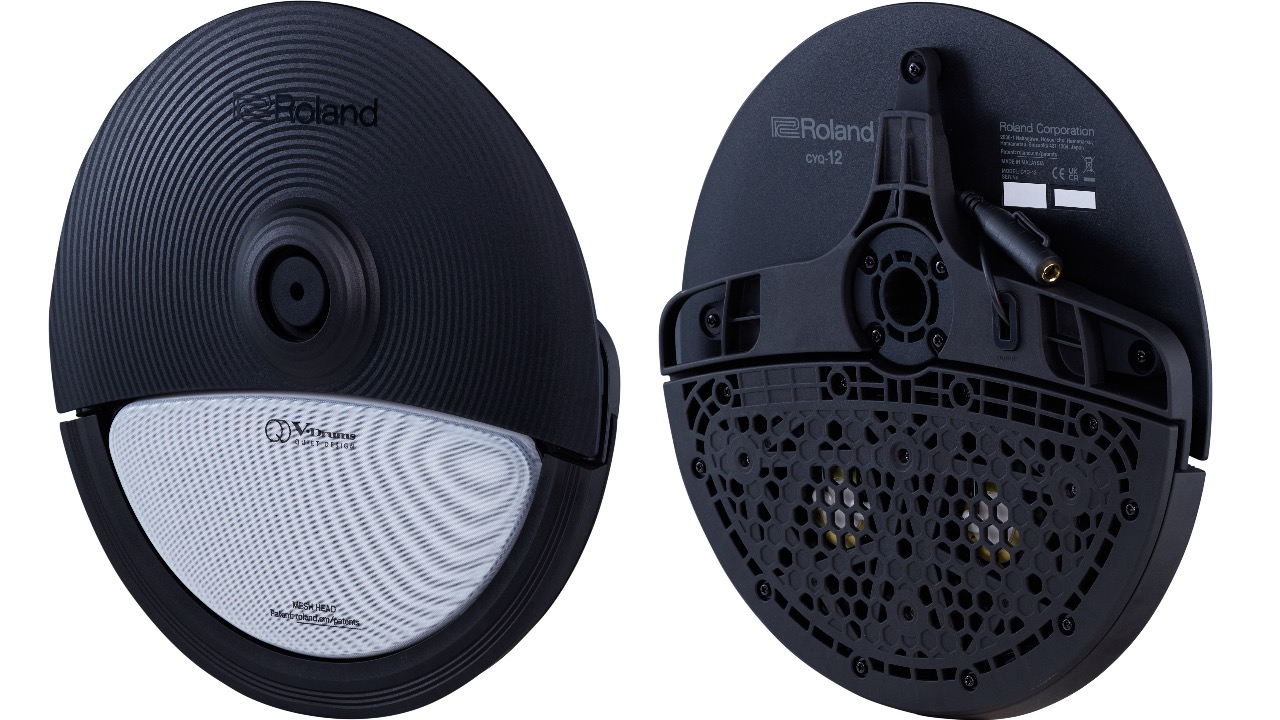
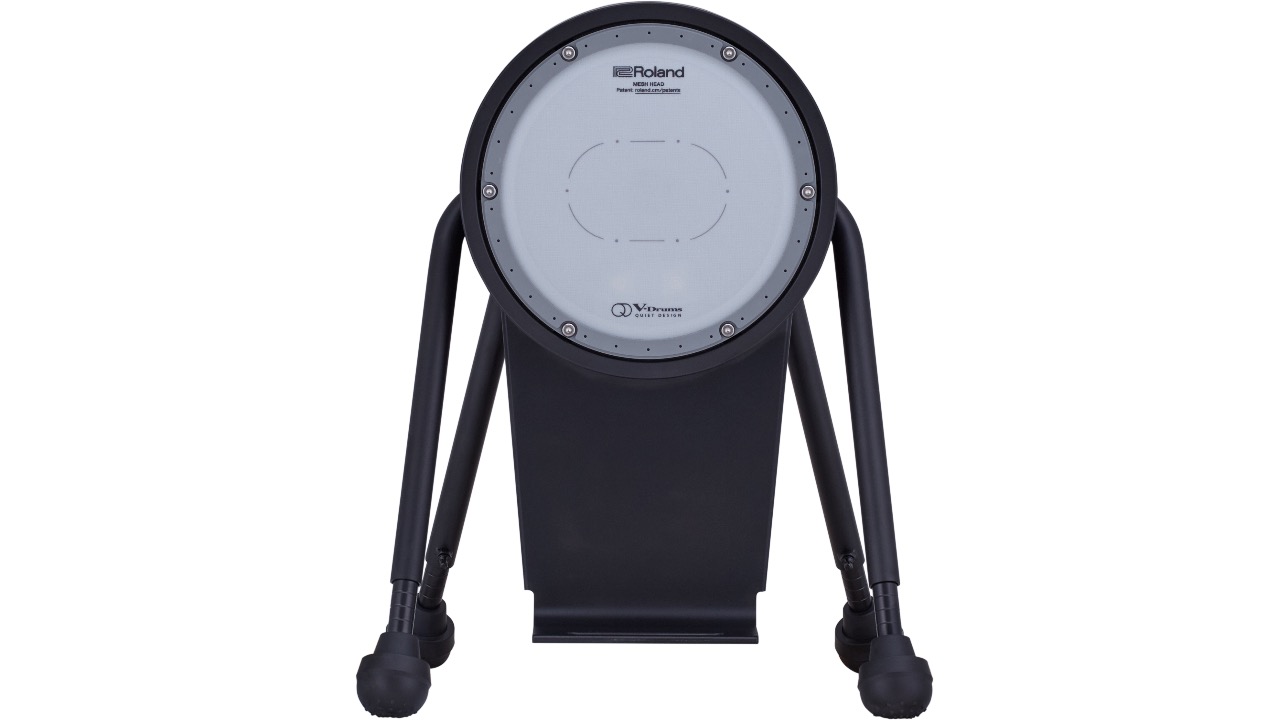
Specifications
Reasons to buy
Reasons to avoid
🥁 This kit is aimed squarely at those players (and their parents/family members) where even the acoustic pad noise of an average e-kit is a barrier to entry. The tangible reduction in the volume of pad noise you get with this makes the VQD the most ‘at home-friendly’ electronic drum kit on the market right now.
✅ Buy if you need ‘quiet practice’ to be genuinely quiet: All e-kits produce acoustic noise, but the VQD has been specifically engineered to dramatically reduce this.
❌ Don’t buy if noise is not an issue: It sounds obvious, but why pay out for a kit who’s USP is quiet pads if you don’t need them? There are plenty of capable mesh-headed alternatives out there that deliver tolerable pad noise.
Build quality ★★★★★
Ease of setup ★★★★★
Sounds ★★★★½
Module ★★★★½
Pad performance ★★★★½
Overall ★★★★½
The lowdown: Noise has always been an issue for us drummers - often it’s the barrier that stops some players picking up the sticks in the first place. Electronic drums sought to fix that issue as a ‘quieter’ practice solution, particularly with the introduction of mesh pads. However, whilst quieter than acoustic drums, e-drums have never been truly ‘quiet’, particularly to those not using the kit as pad noise and vibrations can travel through adjacent structures.
Roland’s VQD (V-Drums Quiet Design) technology claims to reduce noise levels by 75% vs competitors, thanks to a revolutionary new pad design and design tweaks to the bass drum beater and even the frame. We’ve shot our own video to test this claim and you can watch it below. The kit is available as a standalone pads/rack setup (VQDPADS) that is compatible with a range of existing Roland modules, or you can purchase the VQD106 configuration, which pairs the pads with Roland’s TD-07 module - and that’s my choice for this guide entry. You can read more of my thoughts on this module in my Roland TD-07KV review, but we’re focused on the pads here.
Configuration and build quality: The VQD106 set up is pretty typical - a five-piece kit plus 3x CYQ-12 cymbal pads for hi-hat, crash and ride cymbals (both two-zone, choke-able). The PDQ-8S snare pad is two-zone, while the PDQ-8 tom pads offer a single zone, and the whole lot is built around Roland’s TD-07 module.
All present and correct, then. But what’s special about this kit is the physical changes that have enabled Roland to (spoiler alert) genuinely reduce the overall acoustic noise of this kit.
Vibrational noise comes from every part of the kit: hit a pad and the vibrations travel through your drum rack and straight into the floor. Similarly, your floor-mounted pedals are primed to send the thump of the bass drum and hi-hat controller straight into the fabric of the building.
Roland has focused on isolating key elements of the kit that are most prone to creating noise and vibrations, to stop those vibrations traveling from the kit and through the floors/walls of your practice space.
The rack features domed rubber feet under each post, while the bass drum pedal and hi-hat controller are mounted on their own platforms. The bass drum tower also features rubber isolation feet to minimise the amount of impact noise travelling through the floor, in addition to a nifty tennis ball beater. This in turn strikes a mesh head/floating, triple-layered playing surface.
But it’s the pads that are the biggest step-change in e-drum design. Inside, the playing surface is made of a honeycomb-shaped rubber material, which is topped with a familiar mesh head coating to maintain a familiar feel when playing. The underside of each pad is also vented which helps stop those pesky vibrations from traveling.
Similarly, cymbals feature the same honeycomb/mesh combo on the bow section, while the edge zones are cushioned with a soft rubber coating, the idea being that you can play time on the crash or ride edge without compromising the low-noise properties of the VQD. The playable sections of the cymbals are also isolated from the plastic parts, once again to stop transfer of vibrations.
Sounds: I’ve tested the TD-07 module plenty of times before and suffice to say I’m a big fan (check out the Roland TD-07KV entry for more on that), so I’m not going to go into much detail here. The headline feature of this kit is the new pads and noise-reducing features.
Module: See above.
Pad performance: To compare the VQD pads with a standard kit, Roland sent a regular TD-07. Cutting to the chase - playing both kits back to back (and filming/recording the evidence), it’s clear that the VQD not only works, but it does everything it says. Inside the room it’s noticeably quieter all round, but what surprised me most was the feel of the kit. With so much foam within the pads, it’s surprising how similar to Roland’s standard mesh-equipped pads it feels. I found it to be spongier and more forgiving on my hands - like a cross between Yamaha’s TCS and Roland’s PDX-8 - but these heads are tensionable too, so you can customise the feel to an extent. They’re responsive and feel great to play while achieving the low-noise performance they set out to.
The only major gripe for me is that tom pads are single-zone, which is also a limitation of the TD-07 module, but you would still only have single zone capability even if you hooked the pads up to a more capable module.
The cymbals do feel different, particularly if you’re used to playing Roland’s latest CY-14T or CY-16t ‘thin’ models. There’s a little bit more weight to them, but crashing on the edge results in an absorbent response. Roland makes no claims of reduced hand fatigue, but with all the vibrations disappearing into the honeycomb and other design points, it certainly feels like there are fewer fatiguing vibrations transferring back into the stick.
This is e-drum innovation at its finest, although it does come at a cost - this is not an entry-level product - but it is a neater and probably cheaper solution than more extreme sound-proofing tactics. Should you buy this kit? If the noise of acoustic drums or standard e-kits literally means you’re unable to play, then this is the solution you need.

“Roland’s VQD pairs its latest low-noise pad technology with a tried and tested module. The combination of super-quiet performance, great sounds and wireless jamming via Bluetooth makes the VQD106 a winner. If noise limits stand between you and playing the drums then this solution is worth every penny.”
Read more: Roland VQD106 review
Best non-mesh kit
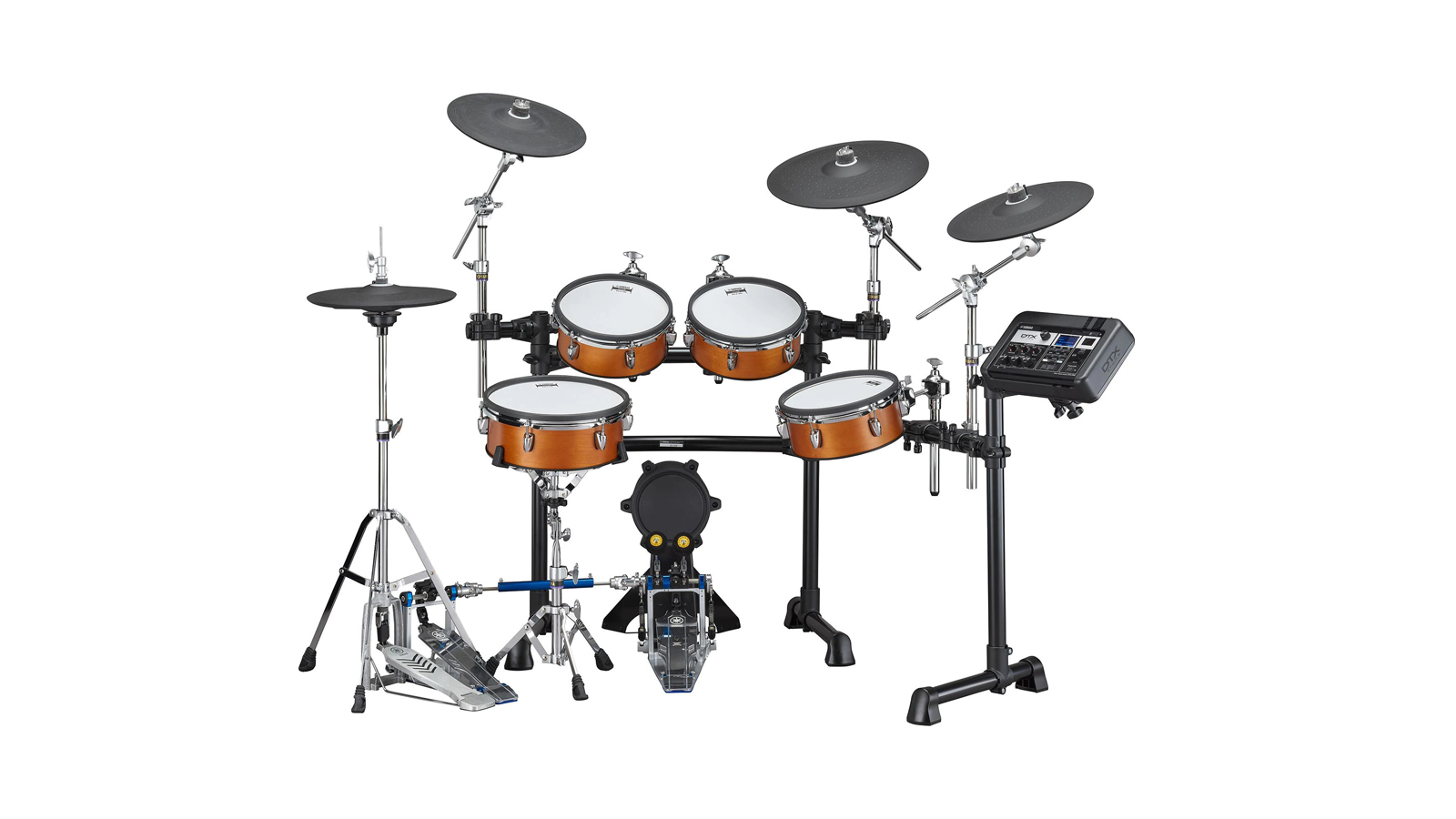
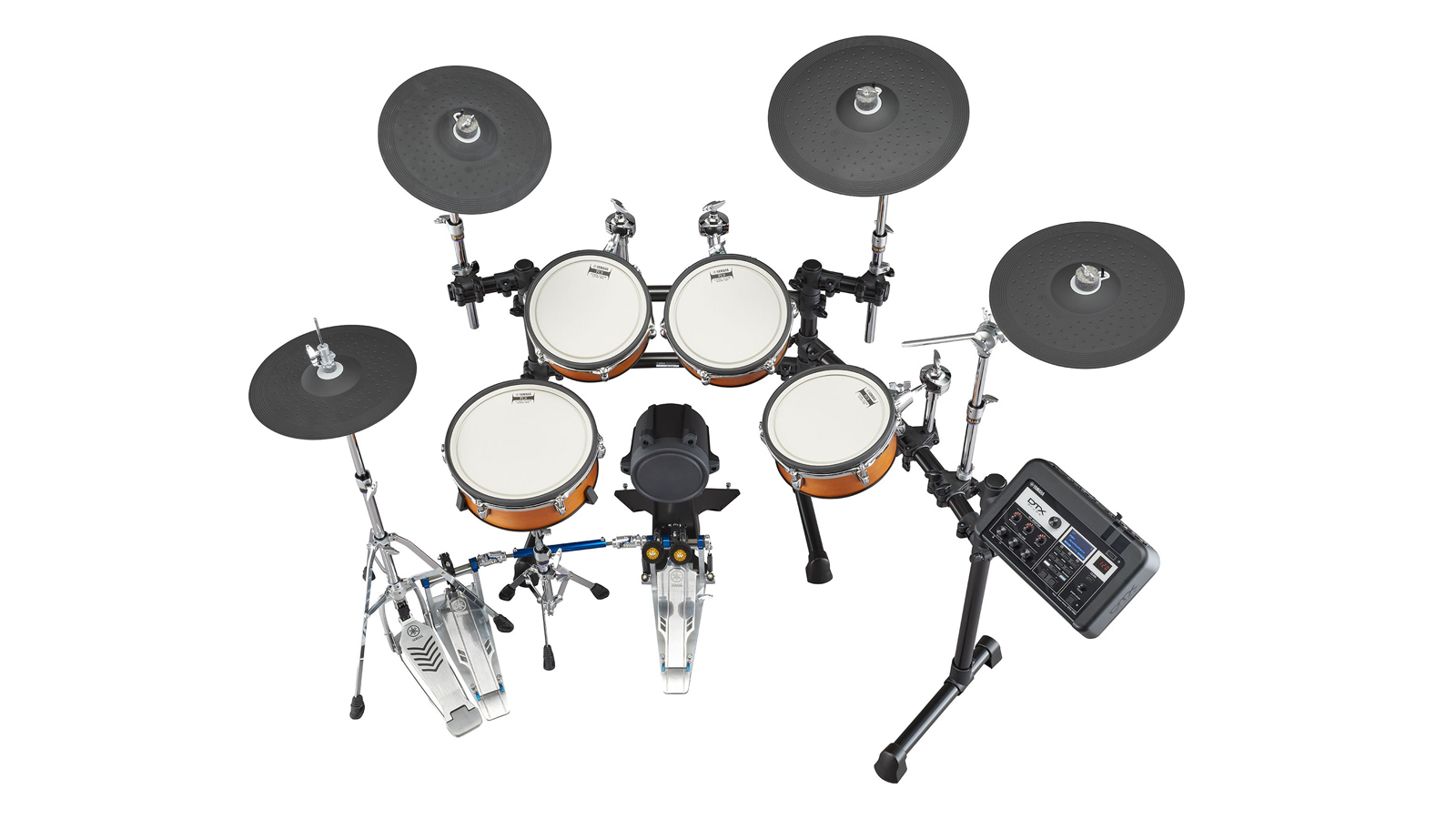
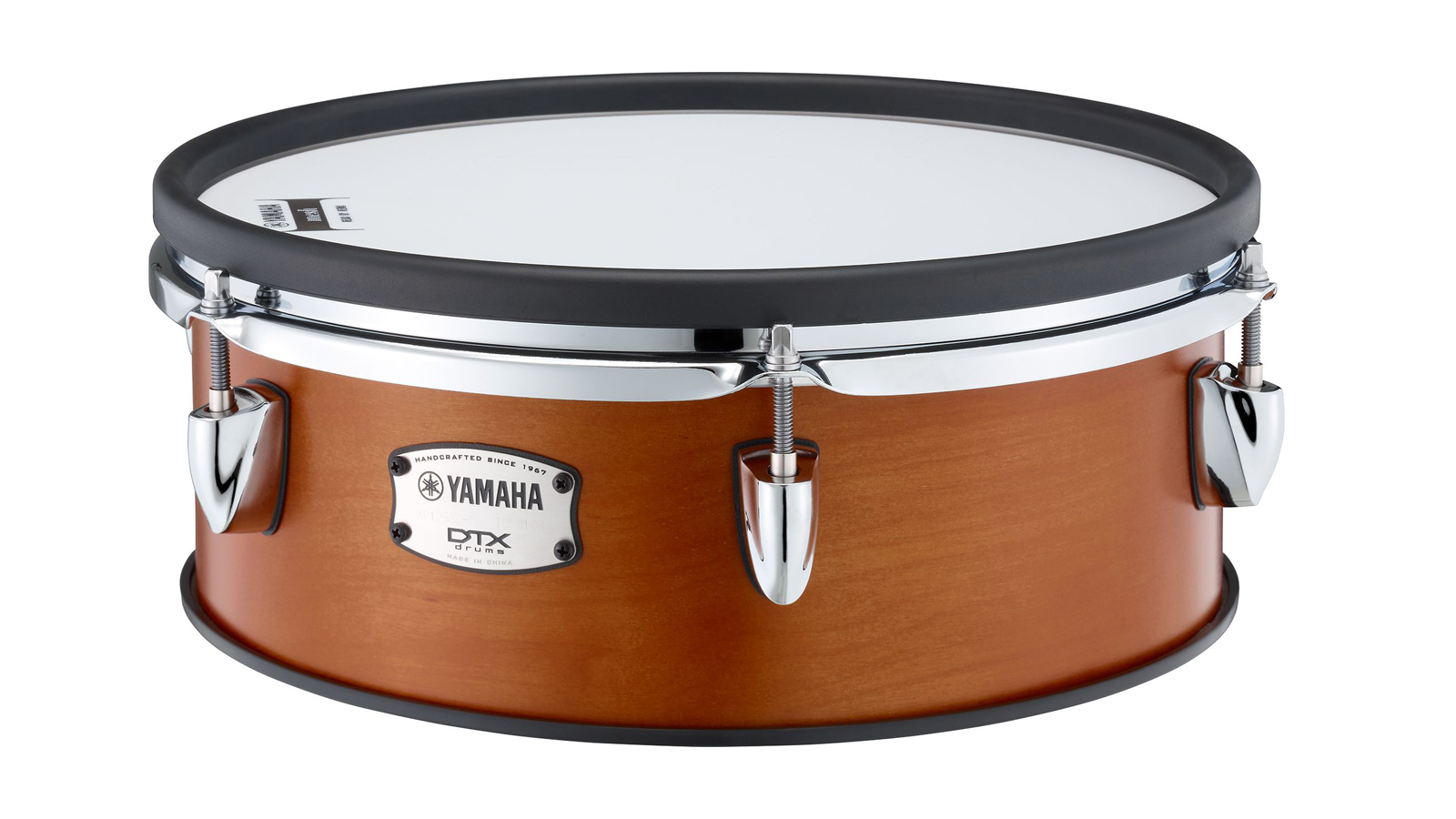
Specifications
Reasons to buy
Reasons to avoid
🥁 Drummers with a reasonable budget who want a reliable kit from a known quantity in e-drums. Yamaha’s hardware is bullet proof, the birch shells look amazing and we’ve run out of superlatives to describe the sounds and tweakability of the module.
✅ Buy if you want simplicity: The DTX-PRO module is very intuitive and easy to use, so you can dial in your sounds quickly and get playing.
❌ Avoid if Bluetooth is a deal-breaker: You won't be able to stream music or follow online lessons wirelessly with this kit.
Build quality ★★★★½
Ease of setup ★★★★☆
Sounds ★★★★★
Module ★★★★½
Overall ★★★★½
The lowdown: While Yamaha's music instrument manufacturing is only a small aspect of their wider business, it has consistently made some of the very best acoustic and electronic drum sets on the market. The DTX8 series is no different, especially when it comes to this e-kit which is, in our opinion, one of the best Yamaha electronic drum sets to date. And if you’re looking for an alternative to mesh or rubber pads, Yamaha’s TCS (Textured Cellular Silicone) material is a tried and tested alternative.
We've not reviewed the Yamaha DTX8K-X, however apart from the pad material, it's the same kit as the DTX8K-M, which we have reviewed. If you want to read our impressions of TCS, we reviewed the Yamaha DTX6K3 which features TCS pads.
Configuration & build quality: If you’re looking for a kit that sounds great in the box and shouldn’t require further expansion, the DTX8K-X has everything you need. It’s a 9-piece kit, comprising 3x toms, 1x stand-mounted snare, a bass drum tower, stand-mounted hats, 2x crash pads and a ride. There’s room to add a couple of extra pads should you need them, but this felt like a substantial setup that you’re unlikely to outgrow. Those beautiful birch shells add a degree of class to the kit, too. And they look as good in the flesh as they do on Yamaha’s website.
Overall build quality is fantastic. Yamaha is known for its road-worthy acoustic drum hardware and they’ve carried this through to this e-kit model.
If you're not a fan of the feel of mesh or rubber pads, this set comes with Yamaha's own TCS heads, which deliver a more natural stick rebound. You'll pay more for TCS, so you may prefer to go with the Remo mesh-headed DTX8K-M, but if TCS does it for you - and take it from me, TCS rocks - then I'd say it's worth it.
Set-up: Getting the kit ready to rock is, like most other e-kits, a breeze once you have the rack in place. The DTX8K-X is two- rather than three-sided too, which leaves loads of room for you to position your hi-hat stand and snare drum pad (also stand-mounted) exactly where you want it. And, naturally, having less tubing to content with reduced my set up time!
Sounds: The DTX8K-X, much like any electronic drum set, is nothing without its module. The DTX-PRO module delivers 40 fantastic kit presets which are modelled on some of Yamaha's top-quality acoustic drum sets, and with space for 200 user kits onboard too, you'll have endless hours of fun crafting your own killer sets for any style of music you can think of.
As excellent as I think the factory presets are, the fun comes in creating your own kits, from switching or layering sounds, to adding your own custom samples, applying effects or tweaking the mix. Many parameters can be tweaked on the fly using pots on the front of the module - I had loads of fun dialing in my sounds and was able to arrive at some outstanding tones very quickly. Yamaha has always been known for delivering fantastic e-kit sounds, but I think this module takes them to another level.
Module: The DTX-PRO module also enables you to quickly add or edit the ambience, compression or effects which are influencing your drum tones - giving you ultimate tweaking power over many aspects of your sound.
On-board you’ve also got 10 training functions, 37 play-along tracks, audio and MIDI via USB plus a professional-grade headphone amp. It’s a real step up.
Our only complaint? Where’s the Bluetooth, Yamaha? Everyone else is doing it!

“The DTX8 edges close to its top-end big brother the DTX10 in terms of features, but it will cost you around half the price. I love the quality of samples and deep editing capabilities, while the birch shells make for a seriously good-looking package.”
Best e-kit overall
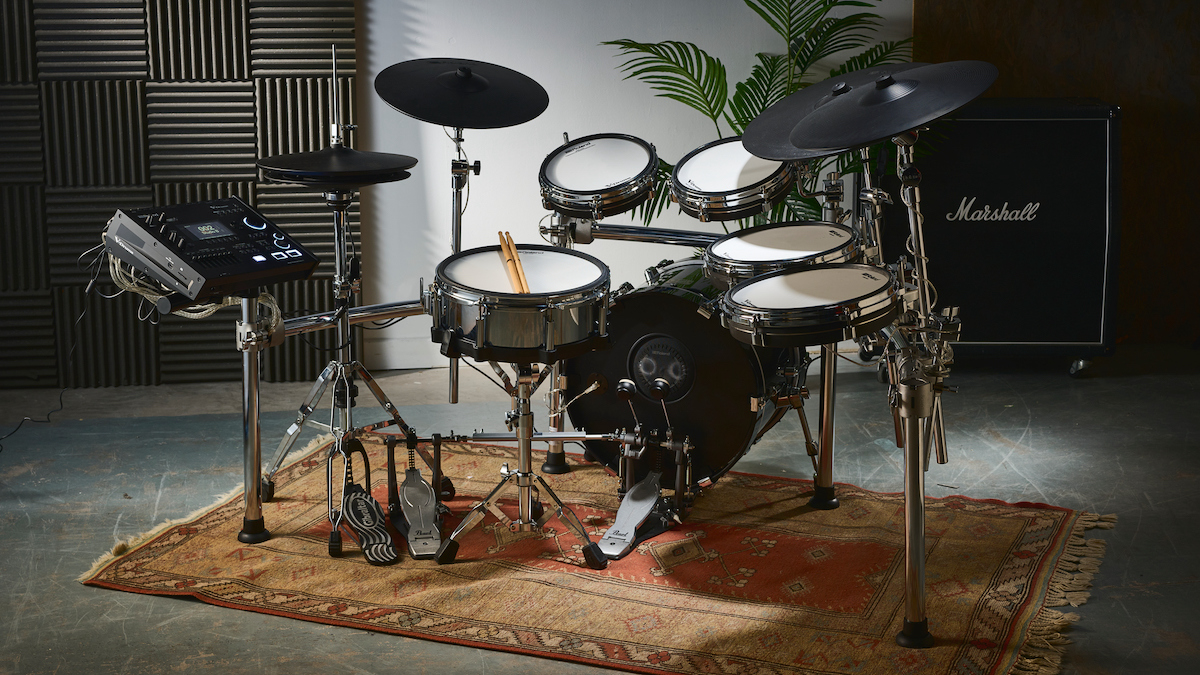
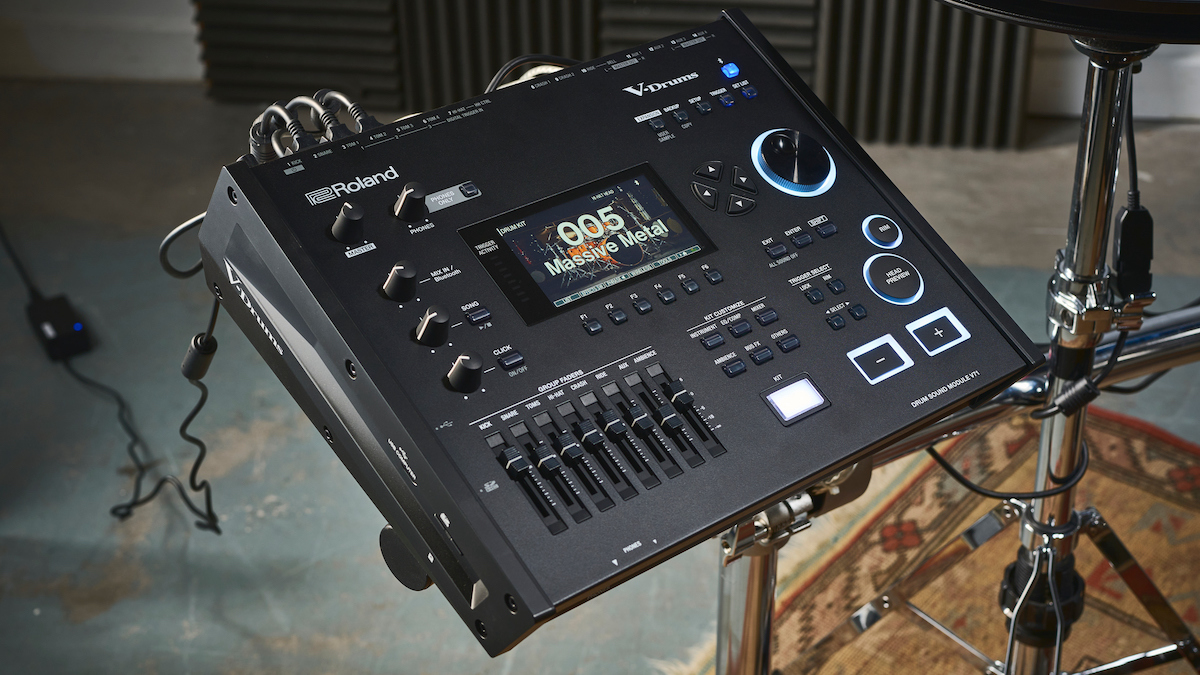
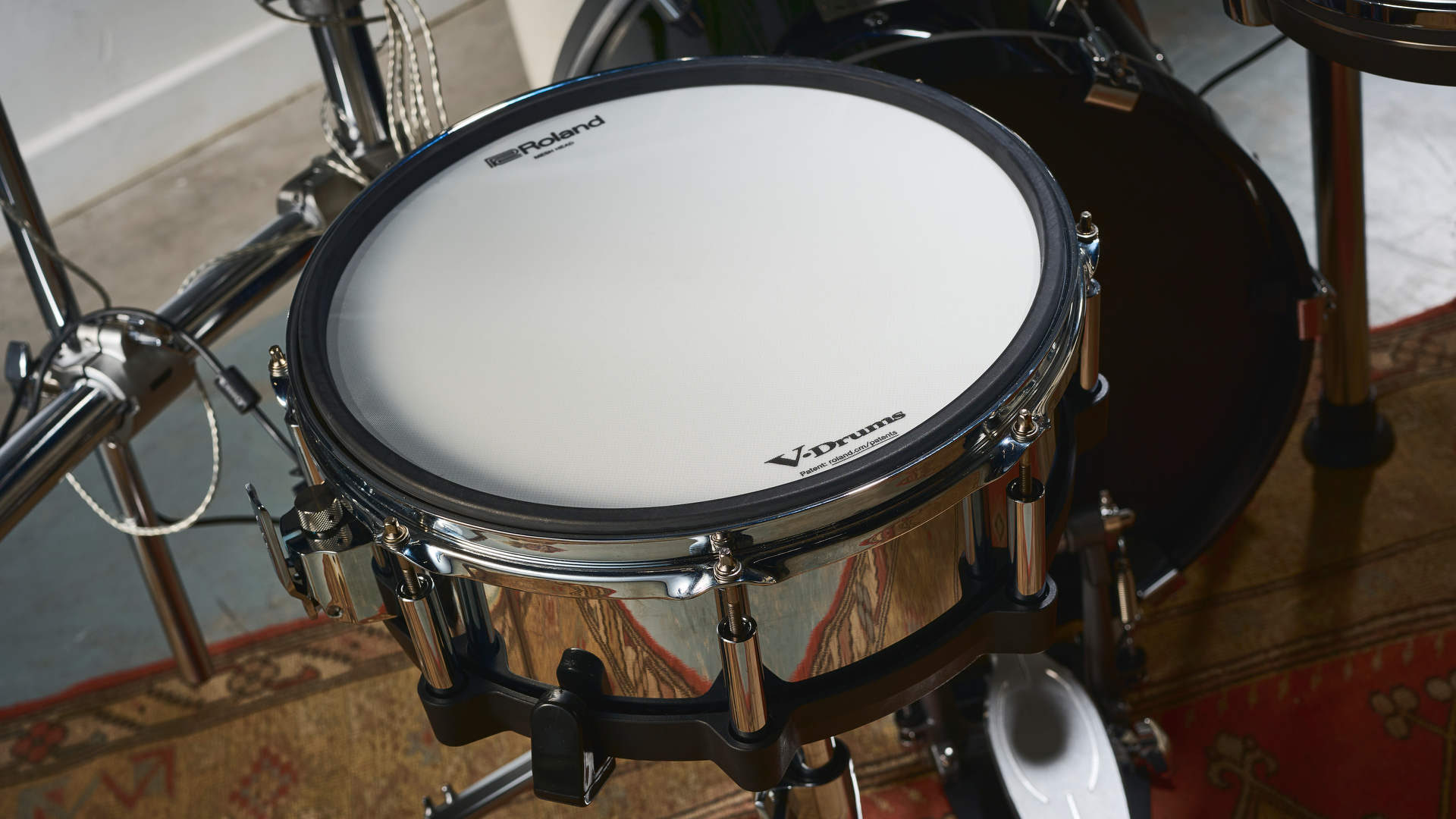

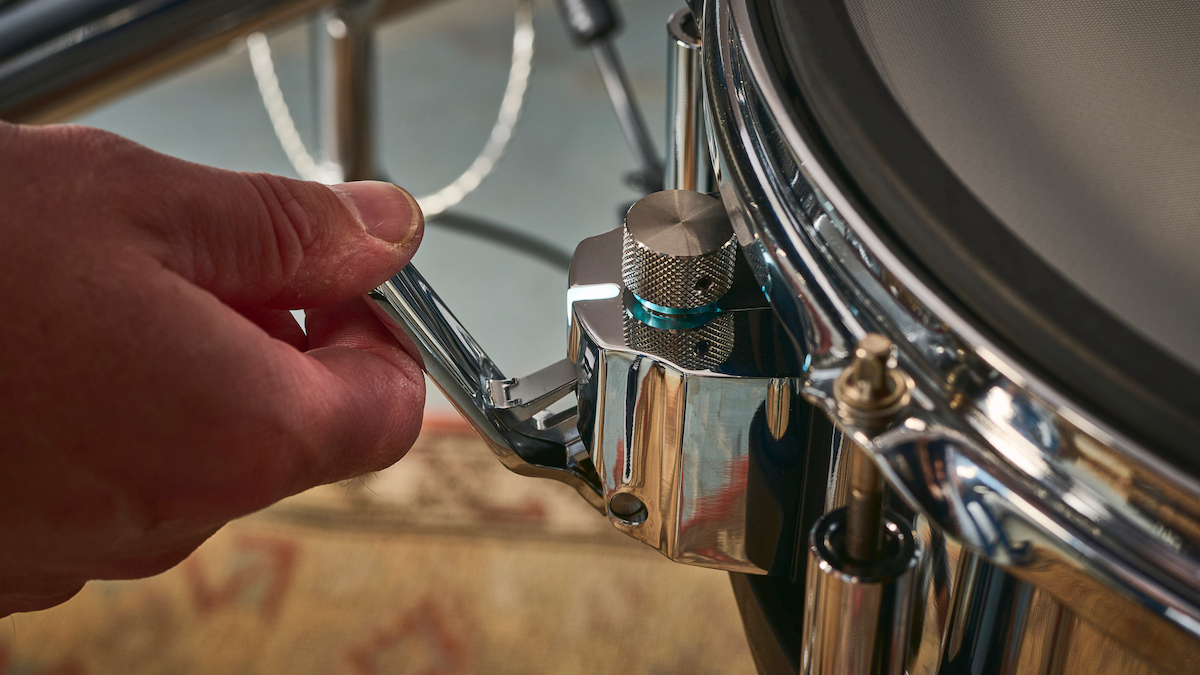
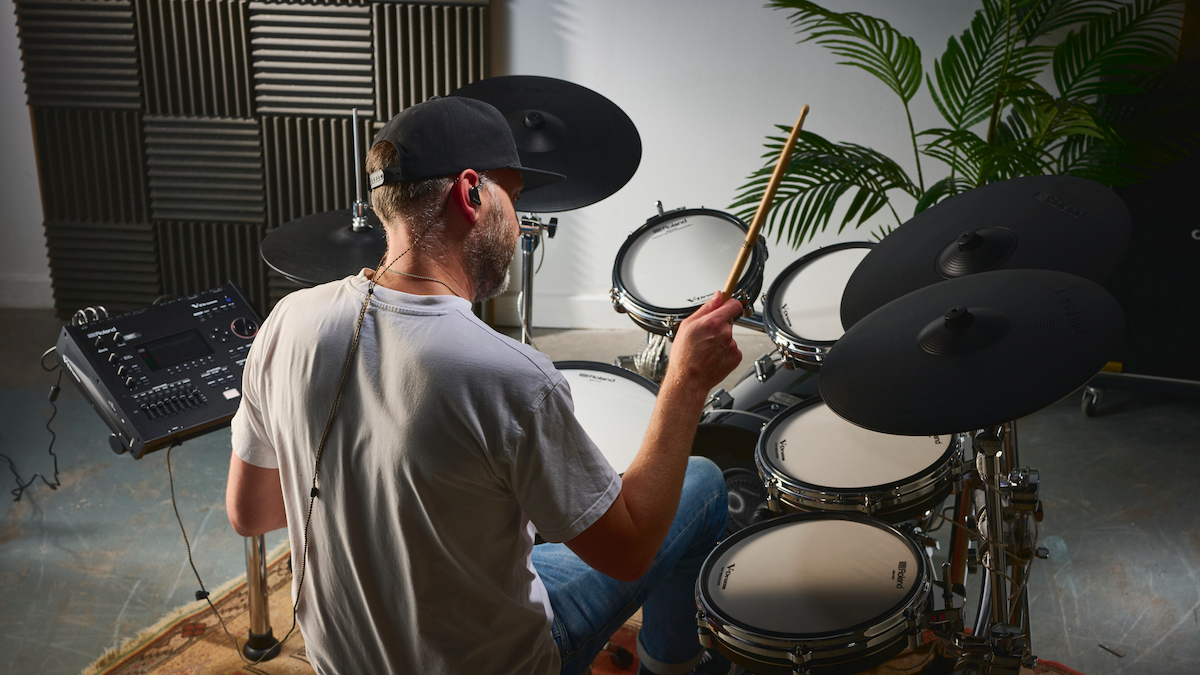
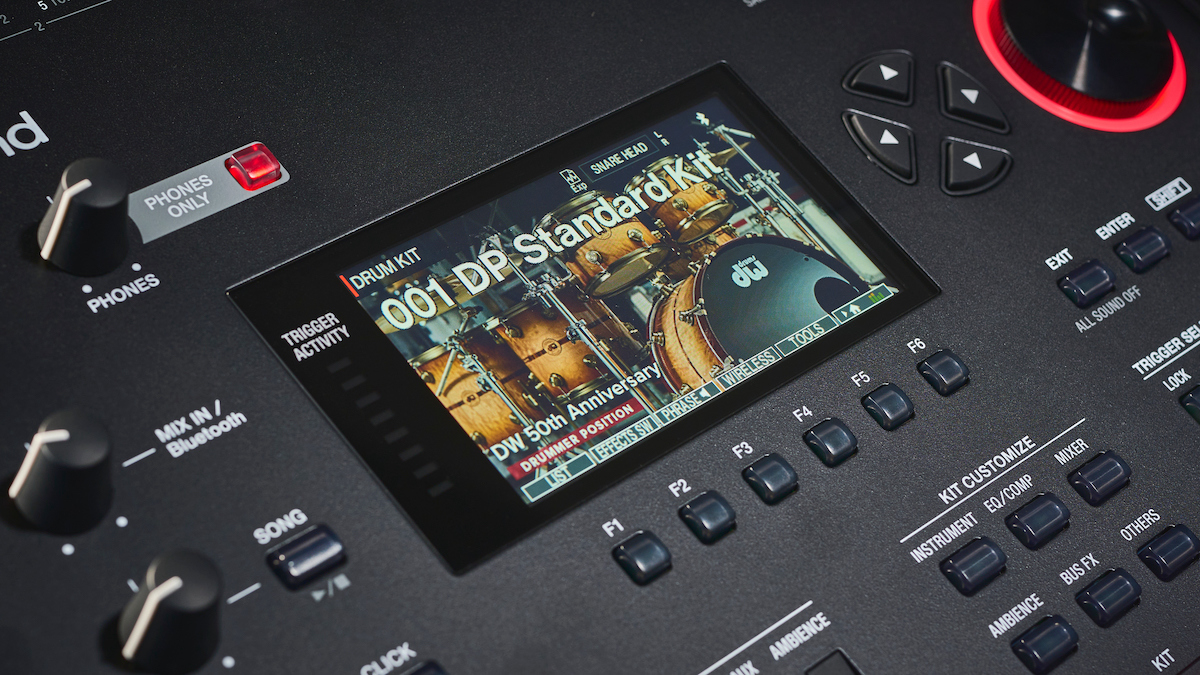
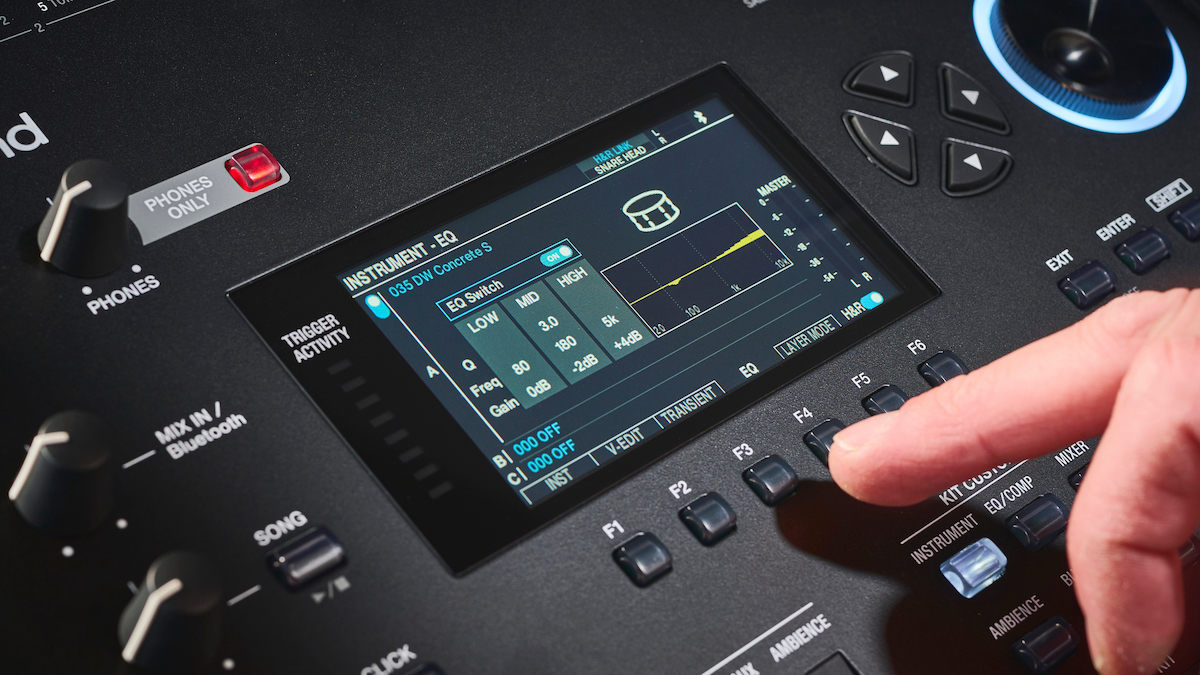
Specifications
Reasons to buy
Reasons to avoid
Pro drummers who want a sound-rich home or studio kit for recording and performance and that is currently the best kit Roland offers. There’s a VAD full-shell version if you want to complete the aesthetic.
✅ Buy if you want the best e-kit tech out there: From the digital hi-hats, ride and snare drum, to the module loaded with sounds, editing functionality and digital modeling, this is a true flagship kit.
❌ Avoid if your budget is limited: Let's face it, this level of tech costs, and there are plenty of great alternative kits out there for a fraction of the price.
Build quality ★★★★★
Ease of setup ★★★★½
Sounds ★★★★★
Module ★★★★★
Overall ★★★★★
The lowdown: This is Roland’s all-new flagship kit, powered by their best-ever module, the colour screen-toting V71 (which replaces the TD-50X) and a brace of digital pads. The V71 forms the backbone of three new configurations under the ‘7 series’ banner: TD716, which is the focus here, plus the more streamlined TD713 and the VAD716, which features full acoustic shells. The V71 boasts an overhauled sound set that includes multi-layered, round-robin sampling and playback, plus DW’s Soundworks software for computer-based drumming - something not seen before from Roland, but brilliantly executed. The module also features WiFi connectivity for linking up with Roland’s Cloud for access to even more sounds. The cherry on top is Bluetooth connectivity.
Configuration & build quality: The TD716 is a six-drum, three-cymbal plus hi-hat setup. The KD-18 bass drum on the TD-716 is a real-shell, 18-inch drum, plus you get new PD-10X and PD-12X tom pads which have been re-designed with streamlined rim bumper and a four trigger cones system beneath the mesh head to reduce hotspots and improve trigger response.
You also get an overhauled digital snare drum, complete with digital throw-off (which has been ported over from the DWe kits) so you can physically switch snares on and off and add or remove tension. It’s honestly one of my favourite things about this kit - truly cool tech. The drums are joined by VH-14D digital hi-hats, CY-18DR digital ride cymbal, and a pair of CY-16-RT crashes. Everything is then mounted to a sturdy MDS-STG2 rack with internally mounted cables. Roland has always been known for the quality of its hardware, and the TD716 is no exception. I’d have no qualms about this kit surviving years of playing, and multiple breakdowns and setups.
Set-up: Ok, so this is a big kit, but actually it doesn’t take any more or less time to rig up than any other kit in this guide. The majority of my time was spent extracting the pads from their boxes and getting the sturdy MDS-STG2 rack how I wanted it. The rack comes partially assembled with the cabling already routed internally, which speed up the process and ultimately makes the finished product look much neater. Once that’s erected and planted firmly on terra firma, adding pads and mounting the module is a doddle. There’s plenty of tweakability in the cymbal and tom arms, so getting the kit exactly as you want it is no problem. And with standalone bass drum, snare drum and hi-hat, getting that all-important kick-snare-hat trio dialled in is easier than ever.
Sounds: The presets housed within the V71 module are genuinely impressive to play, and just as with the Alesis Strata Prime I tested not long before this kit, it doesn’t take long to forget that you’re playing sounds derived from a module rather than a computer. There’s authenticity and variation, whether you play jazz, funk, rock or metal. I particularly like the snares, which I found to be dynamic and lively, with acoustic-style ring, while the bass drums deliver plenty of body and character. Thanks to the round-robin sounds, you’re hearing a slightly different sound every time you play a pad - taken from a pool of literally thousands - so you get true authenticity, responsiveness and dynamism.
These sounds are genuinely gig-worthy - useable, realistic and enjoyable to play. There’s no learning curve to getting a great sound either, because the preset kits have been so well thought out from the off.
Module: The crisp, colour display makes it easy to familiarise yourself with the V71 module. It’s fairly densely populated, with a range of sliders, buttons and jog wheels on the top deck, but it’s actually very easy to navigate if you’re already familiar with the Roland ecosystem. I’ve grown to like the touchscreen of the Alesis Strata Prime, however, I’m still a sucker for the reassurance of physical, tactile controls.
Then there’s that screen. The layout of the controls and accompanying visual representations - from the graphic display of kit setups to the plugin-style representation of effects processors - make me feel like I was operating a pro-level drum module.
Importing kits from the Roland Cloud is easy too, with simple option prompts between the selection buttons and cursor. It’s a quick process, convenient and will no doubt continue to evolve.

“Not only has Roland come up with a gig-worthy solution to getting realistic acoustic sounds from an electronic drum kit, but it’s done so impressively. These aren’t just ‘good for a module’, they’re genuinely useable, realistic and ultimately very enjoyable to play. Throw in Soundworks compatibility from within the module and we’ve got to use the phrase ‘game-changer’ for the second or third time this year.”
Read more: Roland TD716 review
Also consider
The above electronic drum sets are the very best options that we recommend you spend your hard-earned cash on, but these aren't the only models we've reviewed. We have over 80 e-kit reviews on MusicRadar and we regularly test new models to ensure we're recommending only the absolute best. Here are some notable mentions from our recent testing...
Drum Workshop DWe ★★★★½
The best (and only) e-kit offering wireless triggering
DW’s new hybrid drums look set to change the game in years to come. Two key technologies make this kit possible: 1) latency-free wireless triggers and 2) DW’s vast Soundworks software which you run via a laptop. While there's definitely room for improvement, we can see wireless triggers and a shift to using laptop-based sample software for sound generation becoming the norm in years to come.
Read more: DWe review
Alesis Strata Core ★★★★½
A cut-down Strata Prime for around $/£1,000 less
With the introduction of the Strata Core, it looks like Alesis’ biggest competitor to the Strata Prime is currently coming from itself! This is a stripped back version of the Prime, both in terms of module size and capability, and the size of the pads. As with the Prime, there’s little not to be impressed with here, from the extremely playable sounds to the slick and easy user interface. You’ll save a chunk of change, too.
Read more: Alesis Strata Core review
EFnote Pro ★★★★½
A top-flight kit that's ready for the stage
If you want a multitude of configuration options, the EFnote Pro is a well thought-out kit that looks totally at home on-stage and is available in a range of sizes. It's easy to use too. You'll need to work at the sounds to get them dialled, but this is a very capable e-kit.
Read more: EFnote Pro review
Roland VAD706 ★★★★½
The best e-kit money can buy if you want real shells
Roland’s VAD (V-Drums Acoustic Design) electronic kits are works of art. Featuring digital hi-hat, ride and snare pads, the 706 offers the kind of playability and natural feeling that Roland has made its name upon. Amongst the myriad sound-editing options on the formidable TD-50X module, building a ‘signature’ sound has never been more thorough
Read more: Roland VAD706 review
Roland TD-07DMK ★★★★½
A great all-rounder for small spaces
The most affordable set in the TD-07 range is also supremely compact. You get the deep editing features and Bluetooth functionality of the TD-07 module, plus all mesh pads, but without too many extra frills. It's a great kit for learning, too.
Read more: Roland TD-07DMK review
NUX DM-8 ★★★★½
A great value e-kit package
Taking all the best bits from the competition, including responsive Remo mesh heads, a spacious rack and fully-loaded and stylish module, the 9-piece NUX DM-8 is a fantastic value e-drum package.
Read more: NUX DM-8 review
Millenium MPS-1000 ★★★★☆
The best sub £1,000 kit with real drum shells
In recent years, the trend for acoustic shells that incorporate electronics has emerged, and Millenium’s MPS-1000 kit brings this concept in at an extremely affordable price point. While the native sounds are't the best, where we think this kit will really shine is as a MIDI controller for third-party sounds.
Read more: Millenium MPS-1000 review
Gewa G3 Studio 5 ★★★★☆
A great mid-range option
The 5-piece G3 Studio 5 is the latest addition to Gewa’s expanding digital drums line-up. It's the most affordable of the bunch, but still doesn’t come cheap. The module shares many features with its pricier siblings, including Bluetooth audio and MIDI, importing of user one-shot samples, recording to USB memory, multi-fx and more, so we found there was plenty to play with out of the box.
Read more: Gewa G3 Studio 5 review
Yamaha DTX10K-X ★★★★½
Another kit we'd happily use live
The entirety of the DTX10 range is stunningly impressive - both visually and sonically - offering the user a truly enjoyable playing experience. The kit offers ultra-realism, with 'positional sensing' on some pads bringing out more dynamics in our playing. The DTX-PROX module delivers heaps of tonal personality and a range of usable effects.
Read more: Yamaha DTX10K-X review
What’s coming up?
The electronic drum set world moves incredibly fast with new releases landing at a regular cadence over the last few years. We’ve reviewed the majority of new launches already on MusicRadar, however there’s a small handful we are yet to get our hands on, but that are on the horizon.
Recent kit launches include the Yamaha DTX6K5-M, which was released at Winter NAMM 2025. It’s an 9-piece all-mesh configuration that centres around the DTX PRO module. That’s heading to our studio soon.
Alesis launched a surprise addition to the Nitro range last year, adding the Nitro Pro alongside the Nitro Max. The Pro includes beefed up pads between toms, snare and bass drum tower and a sturdier steel frame than the Max. This kit is currently in our testing studio.
We’re also waiting on a Zildjian Alchem-E, which was announced back in April 2024. The Alchem-E series comprises three configurations, all centred around a module loaded with samples of Zildjian’s huge cymbal range. At launch, Zildjian CEO John Stephans said: “The longtime pain point of electronic drumming has been the rubber cymbal pads that don’t look, feel or respond like real cymbals. As a company that’s been pioneering cymbal technology for over 400 years, solving the challenges of electronic drumming was the next logical evolution in our company’s journey.”
It’s certainly a compelling argument. While we’re not convinced they’ve cracked the formula on their first go, we’re keen to see where they go next and excited to see more innovation. We haven’t reviewed an Alchem-E kit yet, but our request is in and we’ll update this page when we have.
EFnote also had a launch at NAMM, the new EFnote 3 Style B. It’s got an upgraded kick pad and hi-hat and we’re excited to get our hands on this kit. We’ve been impressed with what we’ve tried from EFnote so far. In addition to the EFnote 3, we’re also speaking to them about getting hands-on with an EFnote Mini, which is a super fun looking compact kit with full shells.
How we test electronic drum sets
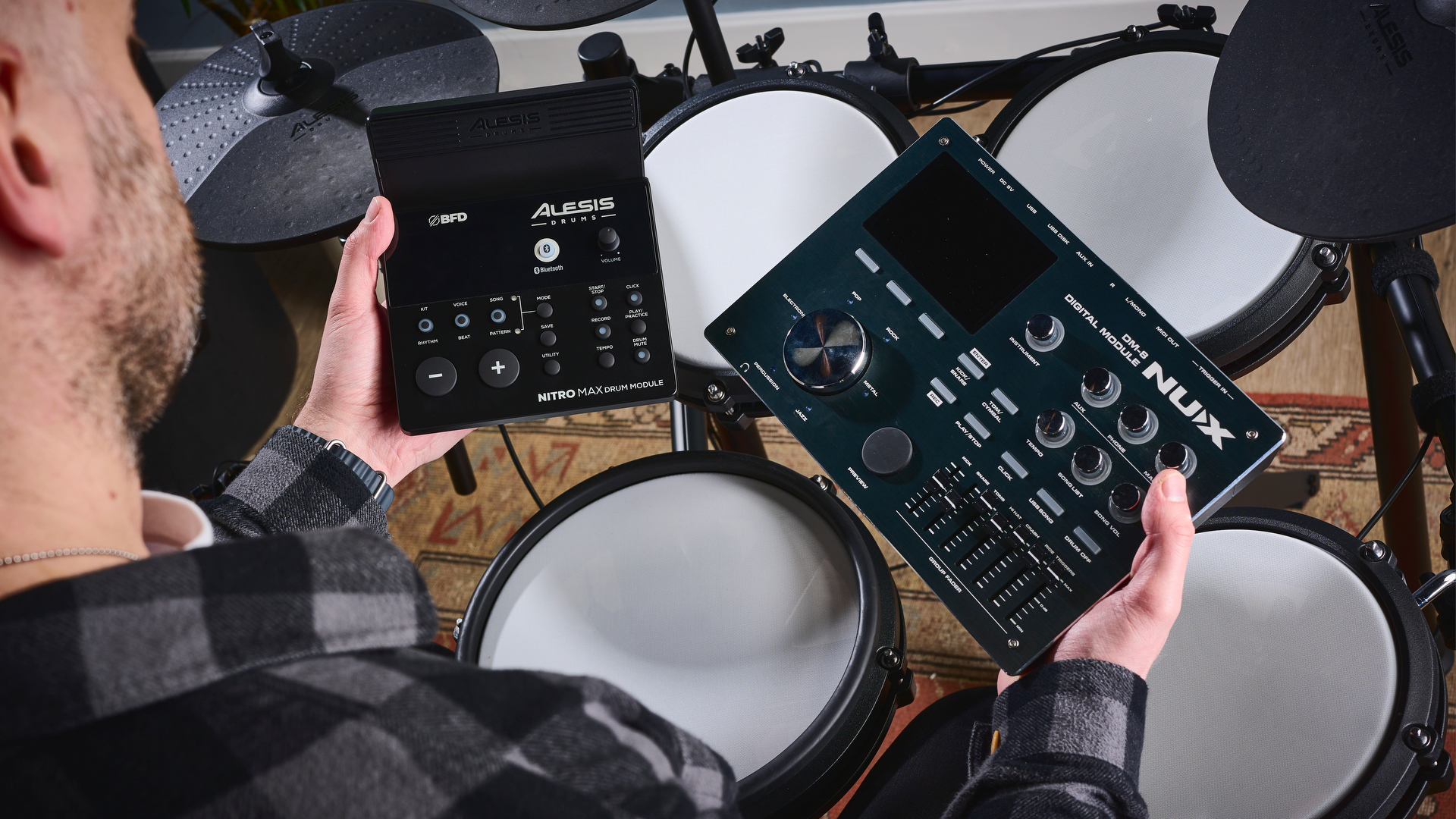
The MusicRadar electronic drum set review process is editorially independent and not influenced by any third parties.
Our experts personally test every kit that we feature in this best electronic drums guide. Review samples are usually sourced directly from the manufacturer or via a local distributor. Sometimes review samples are supplied by retailers.
If we haven’t reviewed something it’s usually due to availability, but you can rest assured we’re in talks to get the kit to our testing studio as soon as possible.
We test electrinic drum sets in a variety of locations - at our testing studio in Bath, UK, in our own homes and home studios, or in rehearsal rooms.
Each kit we test is unboxed from scratch and we put them through as many real-world scenarios as possible. Testing usually takes place over a minimum two-week period. Our expert e-kit testers evaluate the instrument against the following criteria:
- Configuration & build quality: Here we assess the physical feel of the pads/cymbals and the response of the playing surfaces. Are the components - such as wing screws, cymbal arms, ball and socket joints, module mounts - of an adequate quality and designed to last?
- Ease of use/setup: How easy is the kit to construct out of the box? Once built, how easily can the kit be adjusted to fit the setup needs of the average drummer? Is the module user-friendly? How easy is it to connect pads to the module? Is there an opportunity for expansion with more pads? Is there also USB/MIDI connectivity for recording?
- Sounds: What level of quality are the supplied sounds? We’re not necessarily looking at quantity here. A large number of sounds is often an attempt to cover up a lack of quality. We’re also looking at the variety of sounds on offer, and the level of editing functionality for those sounds.
- Other features: What additional features come complete with the kit or module and how well do they work? For example, many e-kits now feature Bluetooth connectivity, but how reliable is it and how easy is the connection process? Is it possible to add your own sounds to the module? If so, how easy is this process?
This enables us to produce accurate, well-balanced and real-life electronic drum set reviews to help you easily figure out whether the kit you’re interested in really is the best choice for you.
Read more about how we test electronic drum sets at MusicRadar.
Why trust us
☑️ MusicRadar established 2007
☑️ Over 5,000 reviews on-site
☑️ 80+ e-kits reviewed
MusicRadar first launched in 2007 and has been an authority on electronic drums ever since, rigorously testing the majority of key launches since day one. The site is run by a diverse team of passionate musicians who live to gig, record and jam, alongside a core group of trusted specialist freelance writers. We understands what players need, because we’re players ourselves, and we test from this perspective.
Our team have been testing music gear for 17+ years, constantly refining our methodology, delving deeper into products and drawing on our experience of what has come before to understand today’s products better than anyone.
Our testing team includes:
- Expert reviewers with decades of combined hands-on experience testing, playing and owning a wide range of electronic drum sets and with a deep understanding of how e-kit technology has evolved.
- Industry professionals who have worked in the drum/music industry for decades, including Editor positions at leading drumming magazines and websites.
- Our team also includes drum teachers, function drummers, band drummers and players who have worked in drum shops.

"I have been working in the drum industry since 2004, holding various roles within drum media, including Editor of the UK’s best-selling drum magazine, Rhythm, which I did for 7 years until 2016. Over the last two decades I have been tuned into the electronic drum market, covering key e-kit launches, attending trade shows (such as NAMM, the London Drum Show and the now defunct MusikMesse) and playing and testing countless kits from every brand. Since originally writing this best electronic drum sets buyer’s guide in 2018, it has been my job to keep this page up-to-date, accurate and helpful. With a young son at home, I currently have no gigs in the calendar, so I get my drumming fix behind an e-kit in my home workshop."
Current e-kit: Alesis Strata Prime (long-term loan), NUX DM-8 (personal kit)

"I'm a freelance member of the MusicRadar team, specialising in drum news, interviews and reviews - I test the majority of electronic drum sets that come through the MusicRadar studio. You can also see me playing and chatting e-drums on the MusicRadar Tech YouTube channel. I formerly edited Rhythm and Total Guitar here in the UK, but drums is my primary instrument and I’ve been playing for more than 25 years (my arms are very tired). When I'm not working on the site, I can be found on my electronic kit at home, gigging and depping in function bands and working on the odd original project."
Current e-kit: Roland VAD507
How to choose the best electronic drum set for you
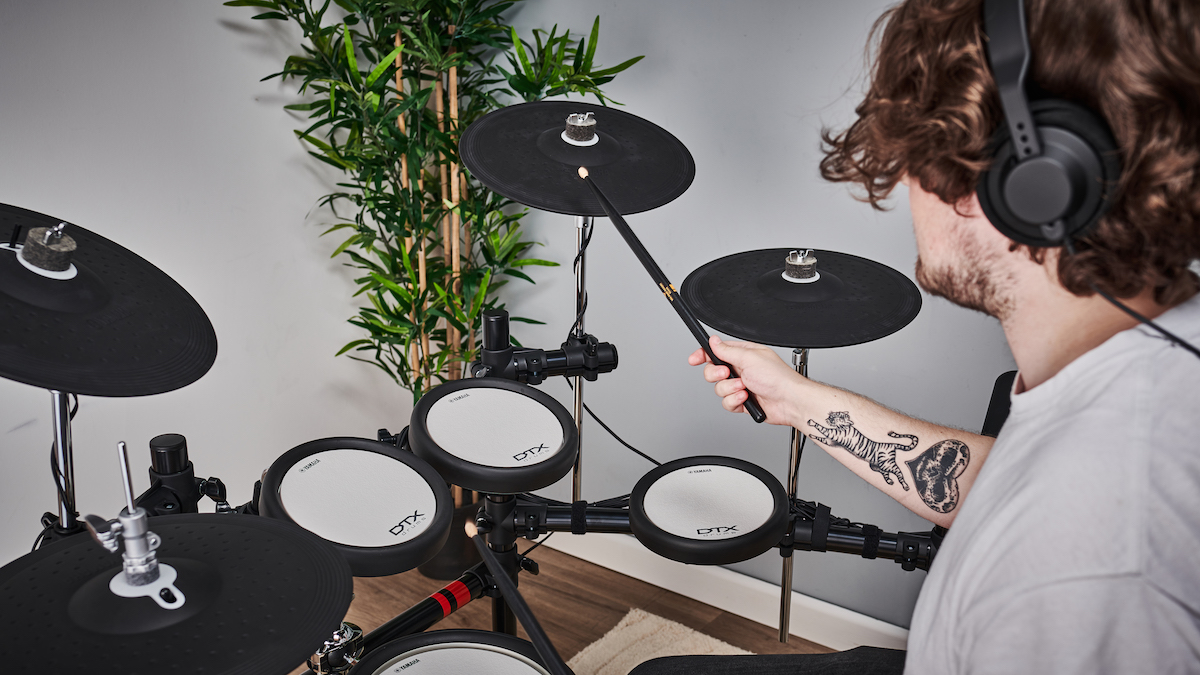
When exploring your next (or first) electronic drum set, there are certain criteria you should always take into consideration. In our experience, the right kit for you depends entirely on the features you need, your budget and where you’re at in your drumming journey, but there’s a number of criteria that every prospective e-kit buyer should consider:
Ease of setup: Is the kit fiddly to build out of the box? Does the brand go out of its way to clearly mark the contents of the box and provide compehensive instructions on how to build it? Once the kit is build, how much additional tweaking is needed?
Configuration: Does the kit come complete with all the pads you’ll need now and in the future, or is there at least an option to expand the pad count down the line? And is the kit’s overall footprint right for the space you’re planning on setting it up long-term?
Build quality: Do components feel built to endure long-term use? This is an instrument you’re going to be striking with sticks and a bass drum pedal at quite some velocity, and adjusting, tweaking and moving from room to room.
Quality of sounds: It’s important to be realistic about how good a kit will sound at the budget end of the spectrum, but your e-drums of choice should offer at least a handful of sounds that are pleasing to the ear - the better they sound, the more you’ll want to play. The more you spend, the more you will experience dramatic improvements in sound, as well as the kit’s response to your playing.
Module functionality: At the lower level, your module should deliver controls for basic kit and backing track selection, running a click track and loading coaching modes. Ideally it will have Bluetooth connectivity so you can jam to music streamed from your phone or tablet. As you climb the ladder, the module will become more powerful, with the ability to process larger samples and enable you to tweak to your heart’s content.
Value for money: This is subjective, but does the kit you’re considering tick all of your personal boxes whilst remaining within whatever budget you’ve set for yourself?
So, that’s a general overview, but there are some major differences between beginner and pro kits. Here’s what you can expect:
Beginner drummers
MusicRadar's got your back
You’ve either never played before, or you’ve had a go and you’re hooked. This is your first ever electronic drum set
Budget: In our opinion, beginner drummers should be looking to spend no more than about $/£700 on their first e-drum set, but we wouldn’t recommend dipping below $/£300. This should be more than enough to get you started.
Kit features: Most electronic kits in this price range will have the important basic features covered - a user-friendly module loaded with passable sounds, learning tools, durable build, adjustable rack system - with the odd extra feature thrown in for good measure.
Most beginner kits should have everything you need to start playing in the box, including drumsticks, pedals and the drums themselves. As with any electronic kit, you’ll also need to buy a drum throne and a pair of headphones for drummers, as they’re considered more ‘personal preference’ items.
Pads: Most e-kits at this level now come with mesh heads (or a worthy equivalent in the case of Yamaha’s TCS silicone pads), meaning you’ll have a fairly realistic feeling e-kit to cut your teeth on. We would advise against anything with rubber pads only as they offer nothing like the real feel of acoustic drum heads, are much noisier in the room and can put excess strain on the hands and wrists. Some kits may offer rubber tom pads with a mesh snare, which would be a workable compromise as you’ll hit the snare more than any other drum pad. We’d personally recommend getting a kit with a ‘proper’ bass drum pedal and pad as opposed to a standalone controller pedal. This will help you improve your bass drum foot technique and make swapping from electronic to acoustic drums easier.
Sounds & functionality: You won’t be getting the best sounds available, however it’s important to have at least a couple of acoustic kits on-hand that sound good to your ears. You should also find more in the way of coaching functions on the module - a must-have for any drummer looking to improve their timing and accuracy.
Not sure if an e-kit is right for you? We go into depth on the subject of whether a beginner should start with an acoustic or electronic drum set in this dedicated feature.
Intermediate drummers
So, you’ve been playing for a while now and you’re outgrowing (possibly literally) your current e-kit. Now you want better sounds, more editing and a kit that’s built to last
Budget: Intermediate drummers will want to spend between $/£700-$/£1,500 on their electronic drum set. At this price point, you’ll access some really impressive features.
Kit features: Your intermedate kit is likely to be stronger and more durable, and will possibly come with an extra drum or cymbal pad (or both). Some intermediate e-kits may integrate traditional drum hardware, too - most commonly a hi-hat stand with an electronic pad mounted to it. This all adds to the feeling of realism, but will mean that your e-kit isn’t as compact or transportable as more self-contained options. In our opinion, this is a worthwhile compromise.
Pads: Intermediate kits come with tensionable, all-mesh pads. Ideally they will be at least dual-zone, but triple-zone for high traffic pads such as the snare drum (pad, rim, cross-stick) and ride cymbal (edge, bow and bell) is ideal. This enables you to get multiple sounds from a single pad. We’d expect more sensitive and sophisticated triggering at this level, too.
Sounds & functionality: You can expect much better drum sounds, plus potentially the ability to load your own sounds into the module.
Professional drummers
You’ve been playing for a long time - it’s possibly even your job - and you’re aware of all the benefits a capable e-kit brings in terms of studio and live work. You’ve probably got deep pockets, too
Budget: Professional drummers can expect to spend anywhere from $/£1,500 to $/£8,000+ on a top-level electronic drum set. If you’re touring the world with an e-kit, then a Roland TD-716 or VAD706 would make excellent choices, but if you’re playing small venues, teaching drums or doing a lot of recording work, then these kits would likely be overkill and you could spend half the cash and get something almost as good, like the Alesis Strata Prime.
Kit features: At this level, the features you can expect will be pretty damn impressive. Sound customisation will be second to none, with everything from microphone placement, and the room you’re playing in, to a huge range of studio quality effects can be tweaked to a granular level at the push of a few buttons. You can expect advanced pad trigger technology, while the module will be all-powerful, able to replicate every nuance of your playing dynamics digitally, without skipping a beat.
Pads: Pads will be mesh - no exceptions - and at least dual-ply, with some brands even offering triple-ply heads for added durability and response. We’ll assume you have loads of space for a top-end e-kit, so you’ll get larger pad dimensions, and they’ll come with either a shallow shell, or full-on acoustic-style shell for that authentic aesthetic.
Roland is a stand-out in the top end e-kit field as you can now get your hands on digital ride, hi-hat and snare pads. The benefits of a digital connection include optimal sensing of every stick hit and velocity, and much lower latency, meaning the most accurate reproduction of your playing.
Sounds & functionality: Overall sound quality and the depth of the samples will be unrivalled, delivering super high-fidelity audio, with loads of effects and ambience customisation coming as standard. Then you’ll find not essential, but nice-to-have features such as internally routed cabling for a neater aesthetic or, in the case of Drum Workshop’s DWe range, wireless triggering, which means no cables at all.
- Struggling to understand terms in this guide? Read our complete A-Z of electronic drums
FAQs
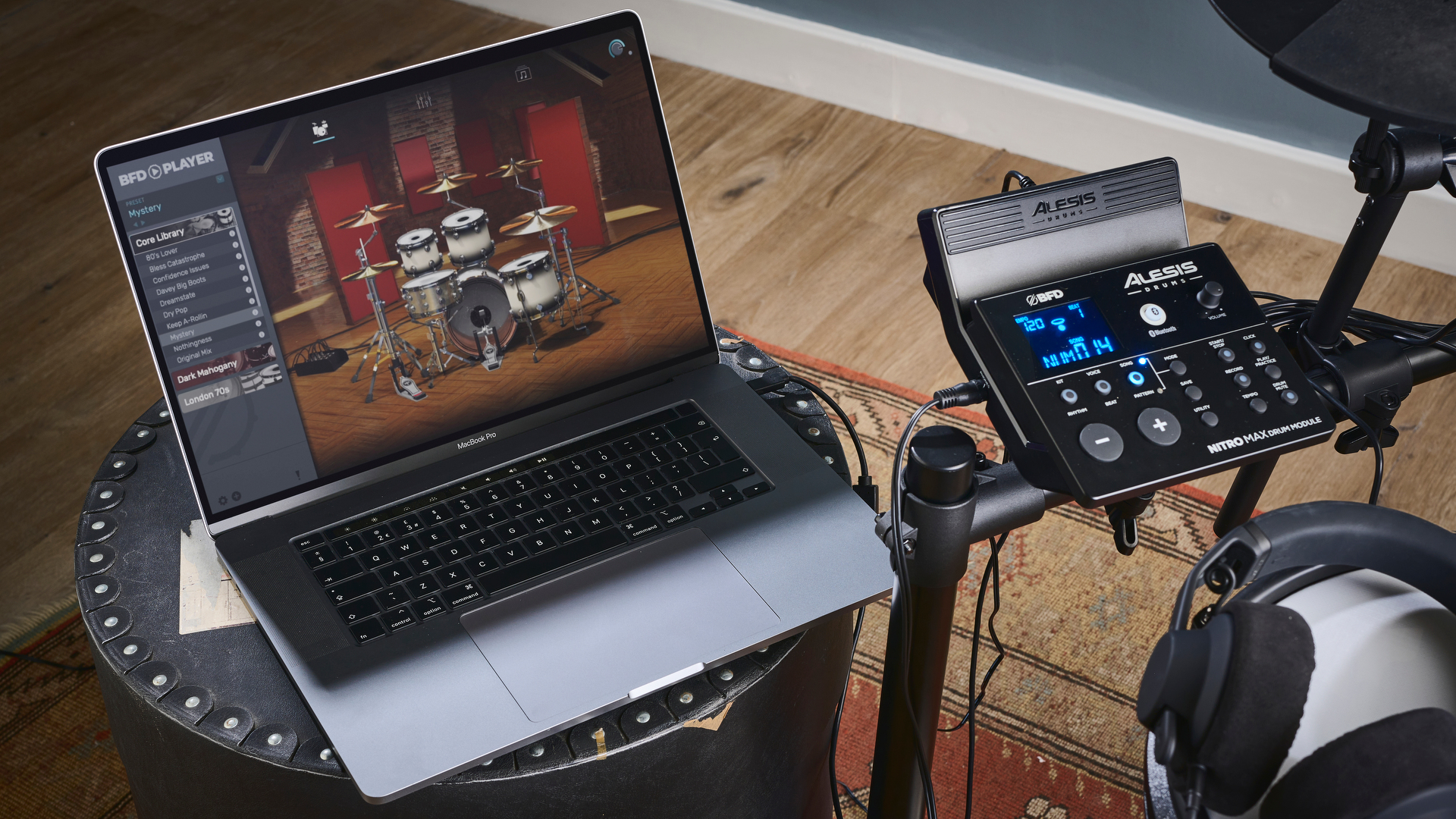
Do I need an electronic drum set?
If you’re unsure as to whether you need an electronic kit, it’s important to ask yourself the following questions:
Can you make as much noise as you like? If you live in the sticks, or have a soundproofed space where making noise is not an issue, we’d recommend an acoustic drum set over an electronic one. However, if you’ve got close neighbours, or people at home who won’t appreciate the considerable noise of an acoustic set, then electronic drums are 100% the solution. But fair warning: an electronic drum set is not completely silent. You will hear the sound of sticks hitting the pads.
Do you need a kit for home practice? If your e-kit is just for practice, then we’d say go for it. Trusting you can’t just make as much noise as you want with an acoustic set, an e-kit is as close to the real thing as you’ll get while keeping your nearest and dearest happy. If it means you can put in more hours behind the kit, then we’re all for it.
Do you want to record drums? Electronic drum sets have become increasingly powerful and convenient tools for recording drum parts for musical projects and band demos. If this is your plan, then a plug and play e-kit will make life super easy, not to mention the fact you can dial in whatever drum sounds you have in your head for the project you're working on, without the outlay on mics, studio space, an engineer etc.
Are electronic drum sets quiet?
While electronic kits are dramatically quieter than acoustic drums, they’re not completely silent - the sound of sticks or your bass drum beater hitting a pad will create audible noise and vibrations in the room and through floors/walls. As such, there are a few things to consider when setting up your electronic drum set, and we’ve also compiled a guide to ways to make your electronic drum set quieter for further reading.
Think about where in your house the kit is going, first of all. Keep it away from adjoining walls, ideally in a central room, or against an internal wall. Avoid having your e-kit upstairs too, if possible. The sound of your bass drum hits or a hi-hat pedal stomp will quickly annoy people on the floor below you.
For those living in flats or apartments, it’s not the end of the world though - there are products available to help isolate the sound, such as Roland Noise Eaters and Thomann’s Drum Noise Elimination Podium. If you’re on a budget, having a rug under the kit at least will help dissipate some of that extra noise.
Are electronic drum sets more compact than acoustic kits?
Electronic drum sets are smaller than acoustic kits and pack down more easily thanks to their foldable racks and adjustable pad positions. They do still have a reasonable footprint when set up though - although the drum pads on an e-kit are typically smaller than acoustic drums, the actual positioning is exactly the same.
Most of the time, the more you spend, the bigger your e-kit will be. Drum pads on more expensive e-kits are usually a more realistic size, and a lot of higher-end kits come with extra drums or cymbals, a chunkier rack and bigger module, too.
Are e-kits easy to set up?
Having set up countless electronic drum sets ourselves, we can confirm that it can be quite a time-consuming task, but it doesn’t have to be challenging. Always use the instructions provided to avoid having to repeat any steps, and take time to ensure you’ve got all the parts before you start building.
Beginner e-kits are usually the hardest to build as rack systems often need to be built tube-by-tube, whereas top-end kits usually ship the rack in sections that can be pieced together relatively easily, or in some cases as a whole piece that simply needs unfolding.
We’ve compiled this in-depth guide showing you how to set up an electronic drum set efficiently, quickly and properly - hopefully without too much swearing.
How does an electronic drum set work?
Simply put, every drum and cymbal on an electronic drum set contains sensors - usually referred to as ‘triggers’ - which detect vibrations and the velocity of those vibrations. Once a vibration is detected, an electrical signal is sent to the module (often refered to as the ‘brain’), which is the nerve centre of your kit. The module then triggers the appropriate drum or cymbal sound for that pad at the correct volume, and it plays back through your headphones or speaker. All in the blink of an eye. Smart, huh?
More expensive electronic kits feature advanced triggers with multiple zones in order to produce different sounds - differentiating between hits on the edge, bow and bell of the ride cymbal, for example. Some triggers also feature multiple pickups, enabling more dynamic and realistic triggering of sounds.
Do I need headphones or speakers for my e-kit?
The debate over whether headphones are better than speakers for e-kit players is a difficult one. If you want convenience, headphones win every time - but if you want a more ‘live’ experience, a speaker (also known as an electronic drum amp or monitor) is the way to go.
Ask yourself why you’ve got an e-kit. Is it for the convenience, or for the experience? Most of the time, electronic drum sets are purchased for quiet practice, in which case headphones would be our recommendation. Grab a decent pair of studio headphones, and lose yourself in your drumming - without annoying the people you live with.
If you’re free to make some noise, then a speaker is a great choice.
Are rubber or mesh pads better?
It’s widely considered that mesh heads are the way to go when it comes to electronic drums. Rubber pads have historically been used on cheaper e-kits as a way of increasing durability - great if you’re a hard hitter, but in doing so, playability, realism and comfort are sacrificed.
Mesh heads are becoming much more readily available on budget e-kits though, including the Alesis Nitro Max which retails for around $/£399.
One other alternative is Yamaha’s TCS (Textured Cellular Silicone) heads. They combine the durability of rubber with the response of mesh. They’re not tensionable like mesh heads, but we’re big fans all the same, having played multiple TCS-equipped kits since they first launched well over a decade ago.
We go deeper on this subject in this mesh vs rubber comparison piece.
What are the best electronic drum set brands?
The world of electronic drums has grown in a huge way in recent years, but a core group of three manufacturers has been consistently leading the charge for a long time. We refer to them as ‘The Big Three’ - Roland, Yamaha and Alesis.
Roland is one of the biggest and best when it comes to electronic instruments. As far back as 1972, Roland has been thinking of us drummers. The first official Roland-branded products were rhythm machines (namely the popular TR-33, 55 and 77 drum machines) - and since then they’ve gone on to be one of the industry leaders in the e-kit game. Their first foray into electronic drums was in 1985, with the DDR-30 digital drums module, while their V-Drums range debuted in 1997 with the TD-10 - and they’ve been innovating since, their biggest move being the introduction of mesh drum heads and, more recently, digital pads and their collaboration with DW Drums for their hyper advanced, wireless DWe drums.
Yamaha is another titan of the music instrument market. They make electric guitars, saxophones, guitar amplifiers, acoustic guitars as well as their brilliant electronic drum sets.
They introduced their first e-kit - the PMC-1 - back in 1986, and now the DTX name prefixes their entire range. Their line-up covers beginner to pro e-kits, with their main feature being the use of TCS (Textured Cellular Silicone) heads over more traditional rubber or mesh, although they do now offer mesh options with some kits. Yamaha’s reputation is huge, and they are a well-trusted brand that makes great products at decent prices.
Last but not least, we’ve got Alesis. They started off as music tech giants, and after releasing the SR-16 drum machine in 1990 - the all-time best-selling drum machine, by the way - they ventured into electronic drum sets. They may have less history in the e-kit world but there are some truly impressive Alesis electronic drum sets on the market. They use a similar mesh head to Roland, delivering highly playable e-kits for not a lot of money. If you’re not so fussed on brand names, then Alesis is absolutely worth a look.
As of late, more companies are joining the fray with electronic kits of their own. For ultimate sound customisation and powerful processing, ATV and 2Box are worth your attention. While ATV makes e-kits designed to look and feel like real drums, 2Box makes e-kits that, hypothetically, are ever-expandable. Great for those who love to push the boundaries with their tech.
Simmons is another company that has made a comeback in recent years. Dave Simmons started out in the early ‘70s building electronic drums and triggers for friends, and quickly became a household name. Their brand has seen a recent resurgence, embracing the world of mesh heads and dual-zone pads.
Acoustic drum giants Pearl and GEWA have also thrown their e-kit making hats into the ring, with Pearl pushing their e/Merge range of e-kits in collaboration with Korg. There are currently two configurations available - the e/Traditional and e/Hybrid, the latter having a full-size 18” bass drum shell as opposed to the PUREtouch Kick Pad of the former.
A newer brand on the block is EFNOTE. Launched in 2018 by a group of skilled engineers with experience working for brands including Roland, EFNOTE offers a range of setups, from standard short stack pad configurations, to full-size shells equipped with triggers. The touchscreen-equipped module offers plenty of customisation and the ability to manipulate sounds.
Also coming from the value for money perspective is Donner, NUX and Millenium, the latter being a budget offshoot of German instrument retailer Thomann. We're yet to try a Donner e-kit, but we've been mightily impressed by the Millenium gear we've played so far - a lot of kit for far less money than you'd expect.
Can I record with an electronic drum set?
The short answer is yes - and it’s actually pretty easy.
There are a few ways you can go about it - but the easiest and most efficient way is a USB cable - which is often supplied with your kit - from your e-kit straight into your computer. One thing to note, however, is that you’ll need a DAW to record your e-kit this way.
A line-out from your audio interface would yield largely the same results as this. It would work, but it wouldn’t be the best option.
We go into way more depth on this topic in our dedicated how to record electronic drums feature.
Can I play live with an electronic drum set?
You sure can. It’s still not a massively common occurrence, but increasingly drummers are using full e-kit setups for their live shows. Drum sampling techniques have improved so much in recent years that the sounds coming out of high-end e-kits are just like the real thing.
This, coupled with the increase in live drum triggering - when drum triggers are placed on acoustic drums and used to trigger pre-recorded drum sounds - means that actually, a lot of what you might hear at a gig is actually the same as you might hear from an e-kit.
Historically, electronic drum sets haven’t really looked the part for stage use. There’s something intimidating about turning up to a gig with a collection of plastic, rubber and mesh when everyone else is rocking acoustic gear. Things have changed, thankfully. Some modern electronic drum sets - for example the Roland VAD706, ATV aDrums Artist Standard and DWe kits - come complete with full wooden shells, meaning they look like acoustic kits but come packing electronic drum set smarts.
When is the best time to buy an electronic drum set?
We stand by every kit in this guide when it comes to value for money, features and build quality. If you're in the market right now, then you can do no wrong in picking one up. You may even find small discounts if you shop around (you can use our price widgets to find the best prices in your territory at our trusted retailers).
That said, in our experience there are optimal times of the year to buy. You can usually find small discounts throughout the year, and during key sales events like Labor Day, Memorial Day, Amazon Prime Day and President's Day, but between October and January is our recommended time to look.
That's when retailers start gearing up to offer the very best prices to coincide with the busy Black Friday/Cyber Monday and Christmas period. If you're able to wait until then, we would urge you to hold off until you can bag the biggest discounts of the year. The money you save could be spent on new sticks, an upgrade to your bass drum pedal, or a quality pair of headphones.
Keep your eyes on MusicRadar for all the best Black Friday electronic drum set deals.
Where can I buy an electronic drum set?
You can buy an electronic drum set from any of the biggest specialist music stores, in-person or online. Places like Thomann, Andertons, Gear4Music and PMT in the UK/Europe, and Guitar Center, Musician’s Friend and Sweetwater in the US all have huge ranges of e-kits from the big-name brands, as well as smaller ones - so you should be able to find something to suit your needs and budget without any hassle.
There are pros and cons to buying an electronic drum set online, but on the whole it’s an easy, convenient way to grab a great deal. The abundance of expert buyer’s guides and informative reviews that you have at your disposal on MusicRadar means that you can find out all you need to know about your new purchase without needing to see it in the flesh. With online purchasing so popular, many major retailers have updated or extended their returns policies, allowing you some extra time to decide whether your new e-kit really is the one you want once you have it home.
Should I buy a used e-kit?
Buying a used electronic drum set brings with it its very own set of pros and cons. Obviously the main upside of buying used is that there are some big savings to be had. In our experience buying and selling our music gear, used prices tend to be roughly two thirds of the new price - which can free up some extra cash for the drum accessories you might need.
Electronic drum sets are designed to be hit, so often their build quality is strong, sturdy and durable. This also means, however, that the used e-kit you’re looking at could have been used and abused by a previous owner.
For this reason, it’s important you’re aware that most manufacturer warranties won’t cover re-sold items - meaning that even if your used kit is within the manufacturer warranty period, you won’t be eligible to use the warranty.
Some big music retailers such as Guitar Center offer a wide range of used products, usually taken in part exchange on new gear. These items are then checked over before they go back on sale, to make sure everything is in good working order. This added peace of mind is worth paying a little more for. It’ll still be cheaper than the new item, too.
Online marketplaces like Reverb, eBay, Facebook Marketplace and Amazon can also provide you with some great second hand options with some major discounts. It’s definitely worth noting that although some of the savings can be huge, you’re reliant on the seller being completely truthful in their description of the product. If you do purchase something that isn’t as described, then Reverb, eBay and Amazon all have help centers that can assist you in sorting out the issue.
Read more of our first-hand tips and tricks for buying a used electronic drum kit.
Latest updates
Recent updates
19/02/25: We recently reviewed the Roland VQD106 kit and were very impressed with the noise-reducing pads. As such, this kit has been added to the guide as the 'best low volume' option as it is currently unrivalled. We've added our thoughts on this kit alongside a link to our full review and a comparison video we shot. We also recently published a page breaking down our full e-kit testing methodology.
06/11/24: Having thoroughly tested the new Roland TD716, we've made the decision to replace the Roland TD-50K2 as our pick for the best overall electronic drum set in this guide. The main reason is the V71 module, which is now superior to the previous (and likely soon-to-be-phased-out) TD-50X module. As part of this update we also added some newly-recorded audio and video perspectives on four of the kits in this guide.
09/08/24: This guide has received a huge and thorough overhaul. While our top picks haven't changed, the usefulness and detail of the info included on each kit has improved. We've broken down our star ratings into individual scores for build, sounds, ease of set-up and the module, while we've also added a use-case for each kit so it's clearer who each one is for. We've also streamlined our FAQs section so it's easier to read and navigate. Where relevant, we've linked to longer-form articles on certain topics should you wish to learn more. Finally, we've re-evaluated our testing methodology and added some detail about MusicRadar's credentials as a trusted review site.
17/05/24: We recently reviewed the Alesis Strata Prime and DWe kits. Both have been added to this guide.
13/02/24: We made further improvements to the labelling of our top picks to ensure readers know exactly why we're recommending each kit. We also added a 'meet the experts' section so you can get more insight into the people responsible for writing and updating this buying guide.
Read more:
- These are the best gifts for drummers
- The best electronic drum sets under $500/£500
- Get creative with the best electronic drum pads
- Hear yourself clearly with the best in-ear monitors
- Sharpen your chops with the best drum practice pads
Get the MusicRadar Newsletter
Want all the hottest music and gear news, reviews, deals, features and more, direct to your inbox? Sign up here.
I'm MusicRadar's eCommerce Editor. In addition to testing the latest music gear, with a particular focus on electronic drums, it's my job to manage the 300+ buyer's guides on MusicRadar and help musicians find the right gear for them at the best prices. I dabble with guitar, but my main instrument is the drums, which I have been playing for 24 years. I've been a part of the music gear industry for 20 years, including 7 years as Editor of the UK's best-selling drum magazine Rhythm, and 5 years as a freelance music writer, during which time I worked with the world's biggest instrument brands including Roland, Boss, Laney and Natal.



